

Vision SUMMER 2023 THE VOICE OF THE CALIFORNIA COMMUNITY MANAGEMENT INDUSTRY FINANCIAL TRENDS ISSUE! INVESTING HOA FUNDS WISELY & SECURELY 36 40 48 ANNUAL BUDGET BEST PRACTICES & TIPS HOA HEALTH: SPOTTING RED FLAGS
Summer 2023 • Vol. 32, no. 2
President & CEO tfreeley@cacm.org
Chief Editor lbertrand@cacm.org
Advertising mhurtado@cacm.org
| Thomas Freeley | 949.916.2226, ext. 315


| Lynette Bertrand | 949.916.2226, ext. 323
| Melissa Hurtado | 949.916.2226, ext. 318
Editorial Advisory Committee
Rob Buffington Gordian Staffing & East West Building Works

Andrew Hay, CCAM-ND.PM The Helsing Group, Inc., ACMC
Caroline McCormick, CAMEx, CCAM OMNI Community Management LLC, ACMC
Justin Sacoolas, CCAM Compass Management Group, Inc.
Lorena Sterling, CAFM Community Association Financial Services

Scott Swinton Unlimited Property Services, Inc.

Hamlet Vazquez, MCAM-HR Wilshire Terrace Co-Op
members, industry partners and supporters of the California Association of Community Managers.
Magazine content copyrighted 2023. All rights reserved. No part of this publication may be reproduced without written permission from CACM.
Opinions expressed by authors do not necessarily reflect the policies of CACM. Mention of any product or service does not constitute an endorsement by CACM. CACM assumes no responsibility for return of photos or art and reserved the right to reject any editorial or advertising materials. CACM does not assume responsibility for the accuracy of articles, events or announcements listed.
Please address comments and suggestions to: California Association of Community Managers, Inc. 23461 South Pointe Drive, Ste. 200, Laguna Hills, CA 92653 949.916.2226 | communications@cacm.org

Attention CACM members: Have you changed jobs or moved to a new location? Reach out to us at communications@cacm.org to update your profile so you don’t miss your next Vision magazine or any other important CACM communications.

2 Vision Summer 2023 | cacm.org
CACM
times annually
Vision Magazine is released digitally by
four
to
THE VOICE OF THE CALIFORNIA
COMMUNITY MANAGEMENT INDUSTRY
Vision
Do we know where you are? Follow us and stay up-to-date on industry news and info! Follow @CACMchat Talk to us about your association’s financial needs. We can help. We offer: • Financing for building repairs and capital improvements1 • Competitive fixed rates up to 15 years • Access to multi-million-dollar FDIC deposit insurance coverage with ICS® and CDARS®.2 Contact a Regional Relationship Manager today: 1. Subject to credit approval. 2. Terms and conditions apply. CDARS and ICS are registered service marks of IntraFi Network LLC. © 2023 Popular Bank. Member FDIC. www.popularassociationbanking.com Larry Hooper, VP 949.842.6161 LHooper@popular.com Kenneth L. Staley, VP 615.477.1480 KStaley@popular.com Southern California Northern California Grant Shetron, VP, CMCA, AMS, PCAM 510.406.3198 GShetron@popular.com
EDUCATION SPOTLIGHT: NEW COURSE, NEW INDUSTRY PARTNER DESIGNATION & MORE
NEW INDUSTRY COUNCILS PROVIDE UPDATE

UNDERSTANDING FINANCIAL STATEMENTS
By Hamlet Vazquez, MCAM-HR
A COMMUNITY MANAGER’S GUIDE TO MANAGING YOUR HOA’S RESERVE FUNDS
By Derek Eckert, RS,
PRA
TRANSFORMING APATHY INTO ENGAGEMENT
By Rob Buffington
THE NOT-SO-SURPRISING IMPACT OF RECESSION ON HOA COLLECTIONS

By Dee Rowe, CCAM
IS YOUR ASSOCIATION SECURELY INVESTED?
By Lorena Sterling, CAFM
RAINBOWS AND UNICORNS: THE DREAM OF A UTOPIAN HOA
 By Scott Swinton
By Scott Swinton
ANNUAL BUDGET BEST PRACTICES AND TIPS
By Andrew Hay, CAMEx, CCAM-ND.PM
FINANCIALS 101: EXPLAINING THE BUDGET TO HOMEOWNERS

By Justin Sacoolas, CCAM
TOP FINANCIAL ITEMS TO REVIEW IN AN HOA
By Lorena Sterling, CAFM
WHAT’S CORPORATE WELLNESS?
By Michelle Hawkins
SPRING & SUMMER LOCAL MEMBER EVENTS PHOTO GALLERY
2023 EXECUTIVE LEADERSHIP SUMMIT PHOTO GALLERY
cacm.org | Vision Summer 2023 3 in this issue news bits Members in the News You Said It California Legislative Update Congratulations Managers New Individual Managers & Management Companies New Industry Partner Members Thank You Sponsors 6 16 20 22 35 47 60 4 14 58 President’s Message From the Roundtable Course Calendar departments on the cover FINANCIAL TRENDS ISSUE! In this edition we focus on the numbers that matter for HOAs. features
38
40
18 24 26 28 30 32 36 38
president’s message

Anyone disagree that our industry needs to be elevated? Community management is a growing industry. But as an industry, we’re a small community. As a community, we should help each other. Support each other. Guide each other. ELEVATE each other. Whether you work for a management company or direct hire of an HOA, help elevate your team members. Teach them through California-specific education. Support them through California-specific certification. Promote their hard work accomplishing their CACM certification to your clients by including this flyer in your board packets: Is Your Community Manager California Certified?
There are so many ways to elevate our industry, but it starts with elevating each other. Have you nominated anyone for a Vision Award? No? Why not? I know that you know someone that deserves to be nominated for an award. I’ve heard comments that we need to add a lot more awards. I think the Vision Awards should be viewed as a special recognition for work above and beyond. Yes, the application process takes a little time, as it should for a special recognition, but never let a process stop you from accomplishing a goal. The process isn’t a journey. The journey is the “why” that special someone should be recognized.
It’s impossible to summarize everything we are doing at CACM in an article or two, so reach out and ask any question about our expansion goals and accomplishments to date. Ask about the amazing Industry Partner Councils and how you could get involved in the associated local committees to help shape your local networking and educational events. Ask about the potential of being a CACM Board or committee member. Offer a suggestion on how we can help elevate you, or how you can elevate the industry.
Until I see you again, ELEVATE someone, and you’ll be elevating the industry.
Thomas Freeley, CAMEx, CCAM, President & CEO

4 Vision Summer 2023 | cacm.org


cacm.org | Vision Summer 2023 5 MANAGEMENT COMPANIES We are your best risk management asset CID Insurance Programs has successfully helped CACM Members with insurance & risk management protection for more than 23 years CACM Sponsored Insurance Programs f E&O Professional Liability f Employment Practices f Cyber Theft & Liability f Master Fidelity f Directors & Officers Liability f Business Office Insurance f Workers’ Compensation f Third Party Discrimination Phone: (800) 922-7283 Email: insurance@cacm.org www.cidprograms.com Don’t let business challenges bring you down...
members in the news
MRoland Team Participates in Annual Women Build Event with Habitat for Humanity

On May 3, 2023, MRoland Management Services closed the office for the day so 16 staff members could take part in their annual “give back” event. Every year for nine years running, the team raises funds and participates in a Woman Build event with Habitat for Humanity. The “MRoland Rockstars” initially got involved nine years ago when Woman Build came to the San Diego region because Habitat was a developer client of their urban development services division. Maggie Roland, CCAM loved that they allowed people who otherwise couldn’t own a home to buy one. It’s become a favorite teambuilding activity. Fundraising efforts typically start in April. Through developer donations and raffling off creative, employee-made gift baskets this year, the Rockstars raised over $10,000, and they helped paint the exterior of homes in Chula Vista. Way to go, Team
Associa’s Desert Resort Management Volunteers at Coachella Valley Rescue Mission

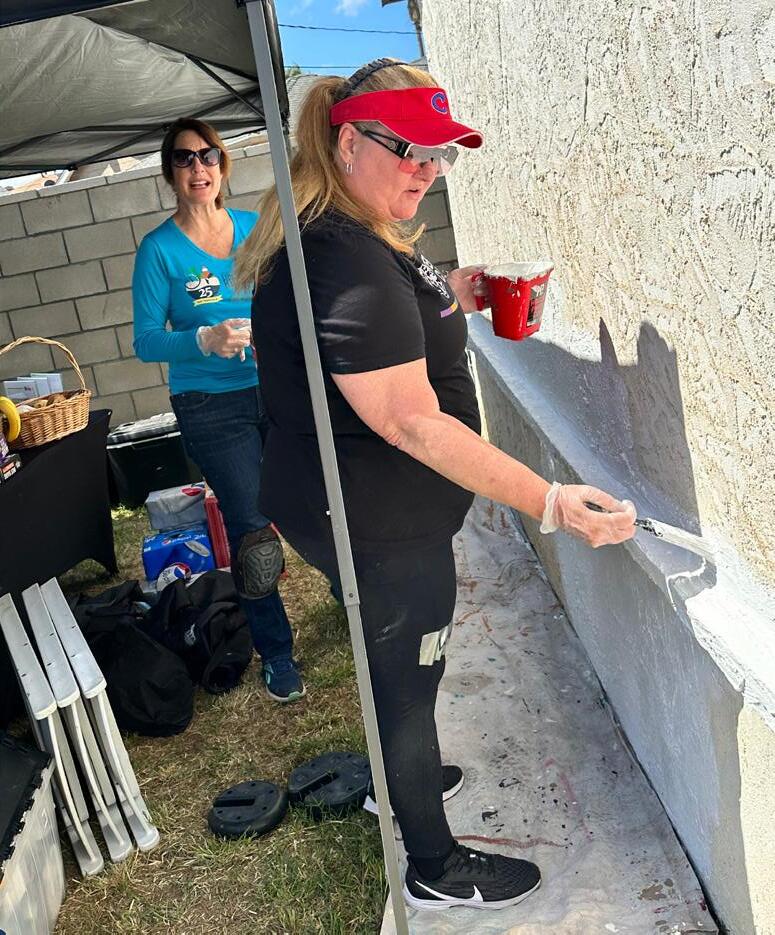
For the second time, Desert Resort Management staff lent a hand to the Coachella Valley Rescue Mission Volunteers served hot meals to residents in the dining hall and, behind the scenes in the kitchen, prepared three days’ worth of meals to feed people who might otherwise go hungry. The CVRM has opened its doors to homeless residents since 1971. The mission provides almost 350,000 meals annually, shelters thousands, and provides clothing, food, and resources to those who choose to stay elsewhere. DRM participated in this event as a part of Associa’s “Big Give Back,” a company-wide program where paid time off is offered to staff members to volunteer at qualifying local organizations.
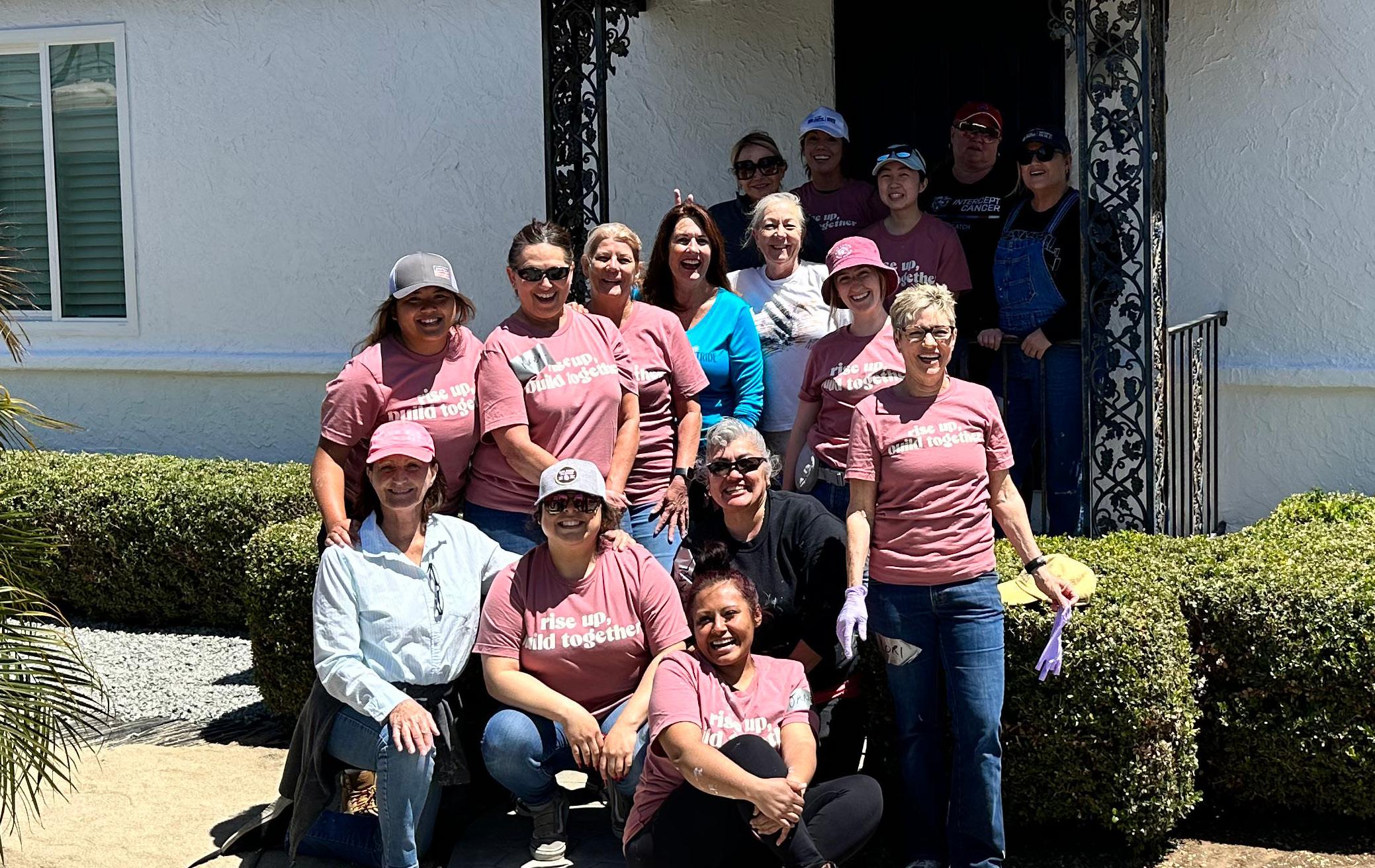
6 Vision Summer 2023 | cacm.org
Hignell Companies Celebrates 75th Anniversary

In 2023, The Hignell Companies is celebrating a big milestone—turning 75! The company marked the anniversary with the creation of a new logo. The company was founded in 1948 by Fred Hignell, Jr. and his partner Floyd Strange by building more than 1,000 homes in 25 subdivisions, in addition to apartment and commercial projects. The company began offering management services for homeowner and property owner association boards in the 1980s. Read more about their history and services here.
JMJ Community Management, Inc. Opens a Second Office
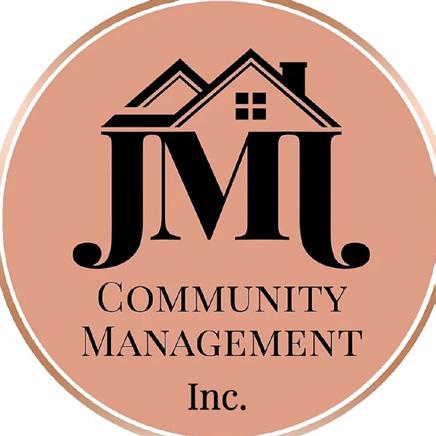
Although relatively new to the scene, JMJ Community Management, Inc. is growing like wildfire. Jennifer Figgers, CCAM, founded the company in January 2023 after managing San Diego area communities for over 16 years because she saw a need for a more personalized level of service. She started the company with an office in Escondido to serve San Diego clients, and less than a year into operations, is expanding this summer with a second office in Menifee to better serve areas like Temecula, Murrieta, and Lake Elsinore. Congratulations to Jennifer and her team for a phenomenal first year.

After Managing for 30+ Years, Mindy Dent Transitions to the “Other Side”
Harvest Landscape scored a good one! After over 30 years managing associations, Mindy Dent , CCAM, decided to hang up the manager hat for now. Before you despair, she is not leaving the industry but chose to join Harvest to elevate their customer service. She provides the Harvest team with a unique perspective that will offer invaluable insight into the board and manager’s point of view. This new hire is yet another example of how Harvest Landscape thinks outside the box to add value and give stellar service. Please join us in congratulating Mindy on the new role.
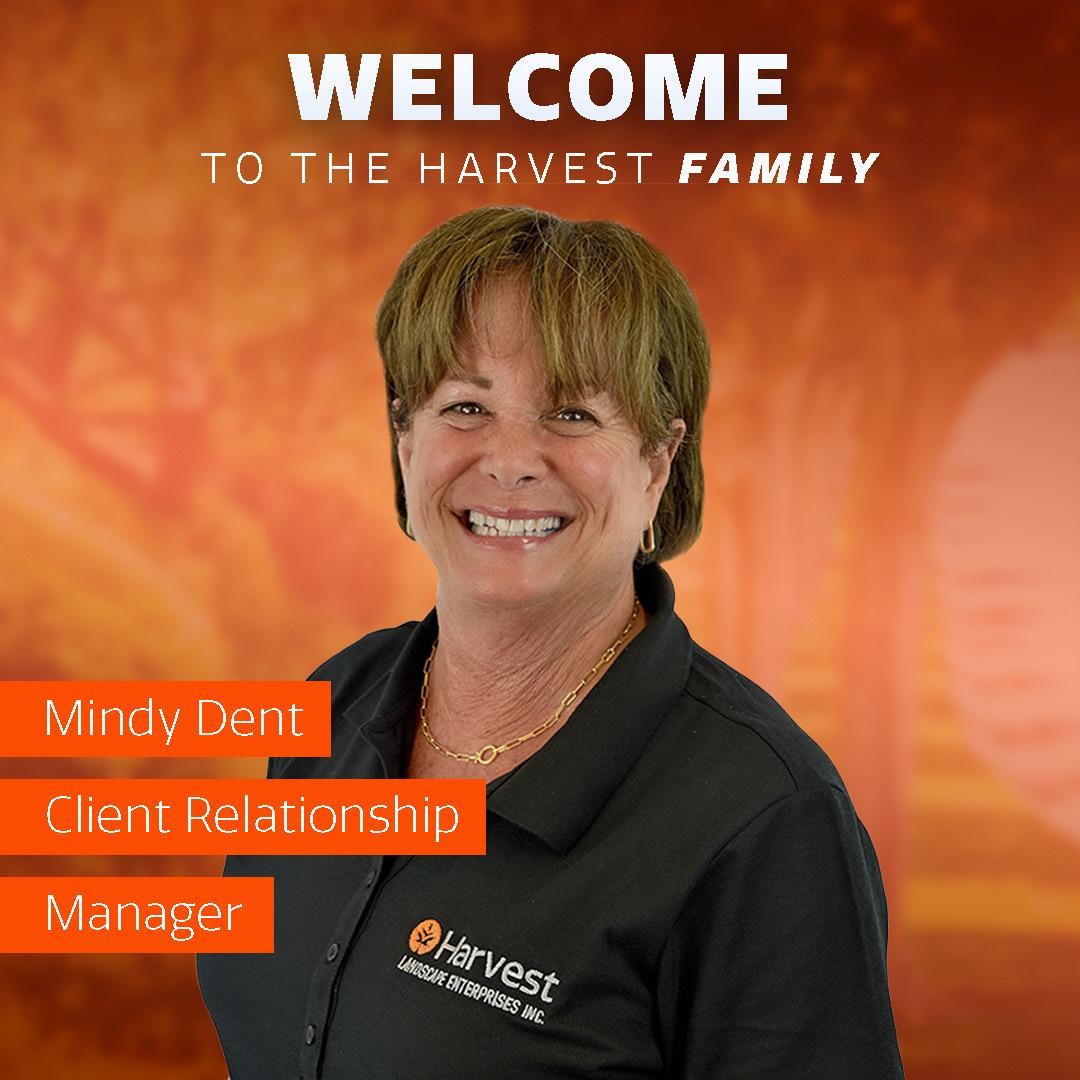
cacm.org | Vision Summer 2023 7 members in the news
Jennifer Figgers
Berding | Weil is Victorious in Lawsuit Against San Diego Water Agency and Wins Prestigious Award
Several Berding | Weil attorneys received the highly sought-after CLAY (California Lawyers Attorneys of the Year) Award. Daniel Rottinghaus , Theresa Filicia , Carlotta Kirby, and Howard Silldorf, along with their co-counsels, received the award for their $79.5 million trial verdict against the City of San Diego’s water agency for illegal and unfair billing practices that harmed San Diego residents. The CLAY Awards recognize lawyers throughout California whose achievements “have a significant impact on the law, the legal profession, a particular industry, or the community.” The nomination process is highly competitive and is considered among the most prestigious awards for practicing lawyers in California.

Gordian Business Solutions Announces New Senior Vice President of Organizational Development

Gordian Business Solutions recently welcomed Doreen Tejeda, former Senior Vice President of Associa Northern California, as their new Senior Vice President of Organizational Development. With over 22 years of experience managing associations in California, she brings a wealth of knowledge and expertise to the Gordian team. And after working her way up the ranks from Community Manager to Senior Vice President during her time at Associa, she can relate to team members on all levels of the career ladder. Congrats to Gordian on your new hire and to Doreen on the new position.
PCM Promotes Joshua Thomas to Director of Community Management
Professional Community Management recently promoted Joshua Thomas to Director of Community Management. He has come a long way since starting as an administrative assistant in 2016. Prior to the promotion, Thomas was a manager in PCM’s office in Foothill Ranch. Markus Ashley, Vice President of Community Management for Professional Community Management, had this to say: “Joshua is an integral part of our Orange County management team and we are thrilled to elevate him to this key leadership position. His commitment to excellence, professionalism, and exceptional customer service make him the ideal choice to lead that office’s community management team.”

8 Vision Summer 2023 | cacm.org members
in the news
Doreen Tejeda
Joshua Thomas
Daniel Rottinghaus
Theresa Filicia
Carlotta Kirby Howard Silldorf

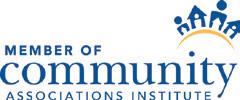




cacm.org | Vision Summer 2023 9 • Treasury Services • Web-Based Payment Portal • Integration Services • Operating and Reserve Accounts • Local Lockbox Processing • HOA Loans • Placement Services for Excess Reserves Your HOA Banking Specialist Give us a call today 844.489.0999 A Dedicated HOA Department Here For You Supporting Members of: www.HeritageBankofCommerce. bank Member FDIC
members in the news
Sarah Yesil Joins Flanagan Law, APC, as an Associate Attorney
Earlier this year, Flanagan Law, APC , welcomed Sarah Yesil as an Associate Attorney. She’s assisting with governing document restatements and general legal matters. Although she’s not exactly new to their team (she’s worked with them since 2021), she is new to their attorney roster and to attending industry events on behalf of the firm. So, if you see her at a future event, please extend congratulations and a warm welcome to this new member of our industry.

Collins Management, ACMC Expands into Marin County

With recent consolidation in the industry, Collins Management, ACMC recognized the need to expand its presence in the Marin market. This spring the company opened a new office in Novato at 7250 Redwood Blvd, Suite 300, adding to its existing corporate offices in Hercules and satellite offices in Walnut Creek and Brentwood. Although Collins Management has been serving communities in Marin for many years, the company wanted to establish a brick-and-mortar presence staffed with local professionals to provide the highest level of service possible. “We wanted to establish a bigger footprint in the Marin market to fill the void left by other firms leaving the market,” said CEO Paul Collins, CAMEx, CCAM. “We are confident that with our local presence and team of experienced professionals, we can provide Marin communities with the highest level of service possible.” Leading the charge in Marin is Jessica Roberts, CCAM, a Novato resident who has been named Marin Regional Manager. Roberts brings many years of experience providing white glove service to high-end communities, and she will bring that same level of service to the region. She will be supported by Melanie Malik, CCAMPM, Chief of Operations, who has many years of experience developing the Marin market for other management companies.
Teresa Agnew Joins Reconstruction Experts
Full-service general contractor Reconstruction Experts recently hired Teresa Agnew as Vice President of the California region. Agnew comes to the company with roughly 20 years of industry experience, most recently with Roseman Law. In her new role she supports the sales department and fosters HOA relationships. “Teresa is a well-respected leader who has both the industry experience and the necessary skills to support Reconstruction Experts of Johns Lyng USA during a time of tremendous growth,” said CEO Rich Whitten. “Her fresh perspective and people-first mindset will continue to foster growth and add tremendous value to our company.”
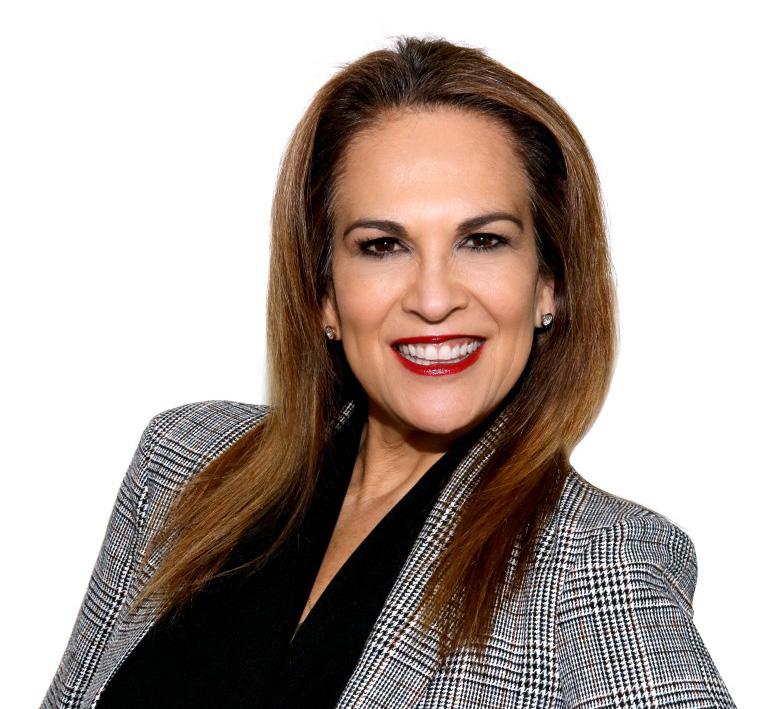
10 Vision Summer 2023 | cacm.org
Sarah Yesil
Teresa Agnew
Members Making Their Voices Heard
It’s been a busy spring with several CID bills coming up for hearings. CACM members Nicole Vanwig, CCAM, and Becky Jolly, CCAM, community managers with OMNI Community Management, LLC, ACMC both testified at committee meetings in favor of AB-1458. The bill, supported by CACM, would lower the quorum threshold to 20 percent upon failure to obtain quorum the first time around for board of director elections. Also recently testifying was Kelly Zibell, CCAM, former community manager and founder of Divergent Consulting Group, who spoke in favor of AB-648, the meetings by teleconference bill, which would authorize a board meeting or a meeting of the members to be conducted entirely by teleconference if the same conditions are satisfied that exist for teleconferencing under a state of emergency. We’re grateful for our members’ participation in the lawmaking process and volunteering their time to ensure that the community management industry’s voice is considered when new legislation is introduced.

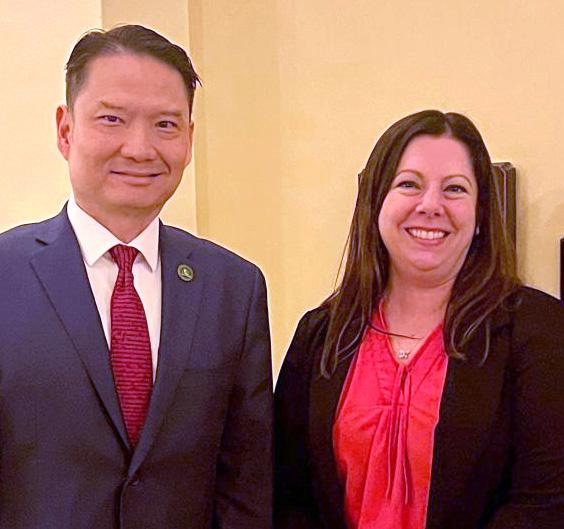
CINC Offers Contract Management Automation
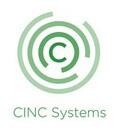

CINC Systems recently released RevStream, a tool that automates management contracts. RevStream allows management companies to automatically track all agreements, general ledgers, and expenses within CINC. While CINC has offered the automation of contracts via addendum billing for several years, the organization is now adding revised reporting capabilities to improve the experience for the executive. Through this feature, executives will see a clear view of where the bulk of their revenue generates and where they have missed an opportunity. One of the key benefits of RevStream is that it automates invoice creation. After services that should be billed are rendered, invoices are automatically created and posted, which allows management companies to get paid without having to ask. RevStream also offers addendum billing features. Itemized invoices and other billing features, such as per unit and assessment charges, are fully automated. “We understand that management companies have a lot to handle, and the details behind every relationship are extensive,” said Ryan Davis, Chief Executive Officer of CINC Systems. “That’s why we’ve created RevStream - to automate contract management and ensure that all billable work is accounted for and collected.”
River City and MasterCraft Join Forces
Northern California companies River City Restoration Inc. and MasterCraft Painting, Inc. have joined forces to offer multi-family and residential property maintenance. “We will now be known as River City Reconstruction and Painting,” the company said on social media. “All staff will be working side by side to offer combined wood repair and painting services for all your property’s needs. We are confident that we will have a smooth transition and that daily operations for our existing clients will continue uninterrupted.”

cacm.org | Vision Summer 2023 11 members in the news
Nicole Vanwig
Becky Jolly
Kelly Zibell
AND NOW FOR BABY NEWS…
Shelby Powell of Berding & Weil Welcomes a New Addition to the Family
Shelby Powell is the powerhouse behind many of Berding & Weil, LLP ’s phenomenal educational and networking events. However, you might not have seen this Business Development Executive in action lately, and for a good reason. On May 6, she and her husband, Jamison Powell, welcomed Lovitt Robinson Powell into their world. Weighing in at a healthy 7 lbs. 6 oz., Lovitt has already captured their hearts. We wish you and your growing family well, Shelby!
It’s Twins for IQV’s Daisy Ortiz
Daisy Ortiz, Sales and Marketing Manager for IQV Construction & Roofing, welcomed twin baby boys, Alonso Romeo, and Ray Julian, in late 2022. The boys were born on two separate days—Ray on Dec. 29 and Alonso on Dec. 30! Needless to say, it’s been double the fun for Daisy and her family. Congratulations!
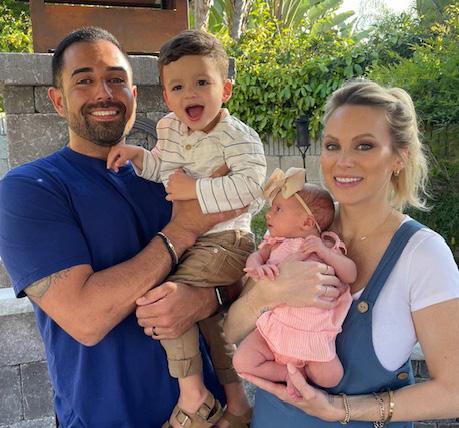

Mommy Returns to the Office
Congratulations to Emily Hemphill of CitiScape
Property Management Group LLC, ACMC , on her return to the office after the arrival of baby Ikeena

Joo Young Hemphill. Ikeena was born last year, but we weren’t able to get our hands on a photo until recently. He’s a baby brother to his 11-year-old sibling.
New Baby Girl Arrives for Mosse Family


Congratulations to David Mosse, Business Development Manager at CM Squared, Inc. and his wife, on the recent arrival of Sage Siena Mosse, born two days late on March 19, weighing 7 lbs. 1 oz. and measuring 19 inches long. “Her big brother Banks loves his sister and we are all enjoying these early days,” said Mosse.
Don’t see your news listed? Update us at communications@cacm.org
12 Vision Summer 2023 | cacm.org members in the news
Shelby Powell
Lovitt Powell
Alonso Romeo and Ray Julian
Ikeena Joo Young Hemphill
The Mosse Family

cacm.org | Vision Summer 2023 13
from the roundtable
A MESSAGE FROM THE BOARD

In this edition of Vision Magazine, the focus is “Financial Trends in HOAs.” The current trend for the economy is moving toward a recession sooner than later. It is vital that we, as the consultants for our board of directors, can guide them through these times.
We all know that managing the HOA finances is critical to ensure the financial health of the communities. As HOA professionals, we must perform several vital financial tasks, including preparing budgets, understanding financial statements, and managing delinquent assessments.
The first essential financial task is preparing budgets. The budget is a detailed financial plan that outlines expected income and expenses for the upcoming year. It allows the board of directors and management to plan for maintenance and improvements and set reasonable fees for our homeowners. The budget should include all expenses, such as landscaping, utilities, and repairs, as well as any anticipated income, such as fees and rentals. We have all seen unexpected increases in expenses, like utilities, insurance, and labor costs, to name just a few. In addition, new legislation has increased costs for many communities. Hence, we need to leverage our experts to aid us in sharing the knowledge for success in future budgeting. We cannot be experts in everything, but we can be experts in consulting experts for budget guidance.
Another crucial financial task for the HOA professional is understanding financial statements. Financial statements provide a comprehensive overview of the HOA’s financial health, including income, expenses, and reserves. By regularly reviewing financial reports with your board of directors, the board and management can identify any issues and make informed decisions about spending and budgeting.
Managing delinquent assessments is also essential for the health of the HOAs. Delinquent assessments are fees that are past due. When homeowners fail to pay their fees, it can create a financial strain on the HOA and impact its ability to maintain the community. To manage delinquent assessments, HOAs should have a clear collection policy for handling late payments, including late fees and other penalties. It’s also imperative to communicate with homeowners about payment expectations and any consequences for non-payment as part of their annual disclosure packet. Recessions in the economy tend to have an impact with an increase in delinquency of assessments– keep an eye on the monthly reports so as not to be caught off guard if the upward “creep” starts to occur.
Our boards of directors, with our leadership, should strive for transparency and communication with homeowners about the financial matters of the association. Doing so can help build trust and ensure everyone is on the same page.
By partnering with the HOA experts that are preparing budgets, understanding financial statements, and managing delinquent assessments, our boards can ensure the community’s financial stability and provide a high quality of life for their residents.
One last thing - share a random act of kindness today!

14 Vision Summer 2023 | cacm.org
Powerstone Property Management, ACMC
HIGH RISE & LARGE SCALE


VESPERA


| PISMO BEACH, CA SEPTEMBER 21-22, 2023
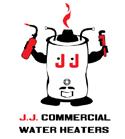
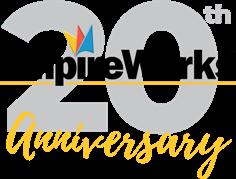















In his first live in-person interview since the tragic collapse of Champlain Towers South, former community manager Scott Stewart will provide a firsthand account of the events leading up to the catastrophic event, the moment it occurred, and the ensuing aftermath. Drawing from his personal experience, Scott will offer a unique perspective and share valuable lessons learned, as well as steps that can be taken to prevent similar tragedies. This exclusive discussion is a must-attend for all community managers who want to learn about the impact of catastrophic loss and the necessary measures to avert such tragedies in the future. Scott’s story is one you don’t want to miss.



cacm.org | Vision Summer 2023 15
A DEEP DIVE INTO YOUR SPECIALTY. SUMMIT
TAKE
fellow managers from across California who specialize in high rise and large scale communities for this two-day summit. This event will offer ample networking time. CCAM, CAFM AND MCAM MEMBERS EARN 6 CEUS.
HIGH RISE LARGE SCALE PREMIER SPONSOR SESSION SPONSOR LUNCH SPONSOR BADGE SPONSOR BREAKFAST DAY 1 SPONSOR NETWORKING RECEPTION SPONSORS PREMIER SPONSOR BADGE SPONSOR NETWORKING RECEPTION SPONSORS CLICK HERE TO REGISTER BREAKFAST DAY 2 SPONSOR BREAKFAST DAY 1 SPONSOR BREAKFAST DAY 2 SPONSOR SESSION SPONSOR
RESORT
Join
THANK YOU SPONSORS
THE MANAGER’S STORY: Lessons
from Surfside
yousaid it!
We had a blast at the CACM Spring Forum in Orange County and in San Diego this week. It was fantastic discussing “Aging Infrastructure” with community managers who stopped by our booth. Keeping up with HOA maintenance is crucial for a thriving community, and we’re here to help. Contact us today!
 — ProTec Building Services
— ProTec Building Services
What a fantastic day at the CACM OC Spring Lunch! We enjoyed connecting with like-minded individuals and learning from their expertise. Kudos to CACM for putting together such an informative and enjoyable event!



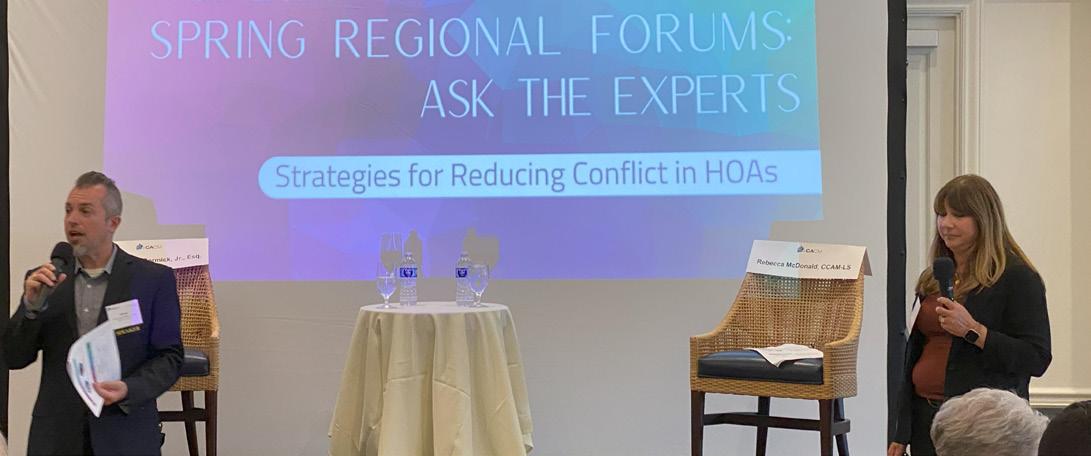
 — Berding Weil
— Berding Weil
Before the day is over, I just need to say how excited I am that CACM has added additional focus on educational opportunities for our managers in the North Bay. This is definitely a growing market and I am very grateful that Megan Mutimer and I were able to support our manager friends today with informative discussions led by Laurie Harris CCAM, and Jeanne Grove.
CM
had an amazing time at the CACM Regional Forum earlier this week! Thank you for hosting such an educational event and allowing our team to exhibit!
— David Mosse, Business Development Manager at CM2
Thank you CACM and Natasha Fierro for coordinating a fun East Bay Spring Member Dinner last night. It was great to see all the managers that joined us! (Great restaurant suggestion John Rivera, CMCA)

— Kevin Reid, Business Development Professional, Recon360


16 Vision Summer 2023 | cacm.org
Squared, Inc. - Architectural Design & Consulting
Follow @CACMchat
— Megan Wright, Business Development Manager, Saarman Construction, LTD
Last night we were representing IQV Construction & Roofing at the CACM Top Golf event. We had so much fun last night, catching up with friends that I even forgot to golf ��

 — Daisy Ortiz, Sales and Marketing Manager, IQV
— Daisy Ortiz, Sales and Marketing Manager, IQV
Construction & Roofing
We want to sincerely thank CACM, Tom Freeley, and his wonderful team for making the 2023 CACM Executive Leadership Summit an excellent, worthwhile event! It was such a pleasure getting to meet and connect in person with so many great and inspirational leaders in our industry in California! I very much look forward to the next opportunity to sponsor a CACM event and to see our new connections once again. We are also looking forward to new partnerships that will help bring the community association management industry to new heights in technology & efficiency!

#els23 #leadership #techstartup #hoamanagement #communityassociationmanagement #inspirationalleaders
— Christina Barkley, National Director of Client Development, Compliance View 360
This was an amazing experience to be a part of the legislative process. Thank you to CACM for the opportunity and also to CAI-CLAC for your support. Managers, get out there and talk to your legislators!!! Send emails asking them to vote yes on AB 648 when it comes to the assembly floor shortly. It’s a game changer!
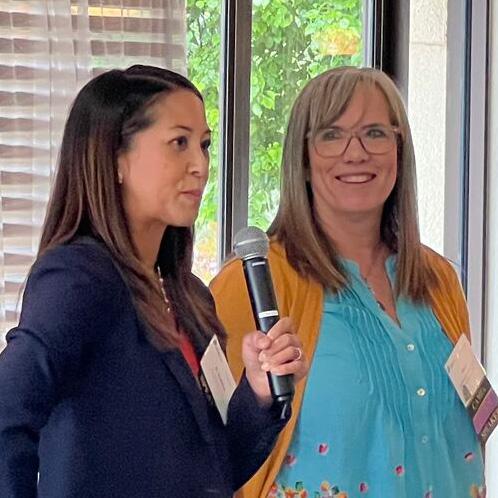

Lastly, get involved with CACM and CLAC to help shape laws that make our jobs easier rather than harder. They make it easy to do and your voice can really make a difference.
— Kelly Zibell, CCAM, Divergent Consulting Group
Thank you
— Jeanne Grove, partner/owner, Kaufman Dolowich & Voluck, LLP
cacm.org | Vision Summer 2023 17 yousaid
it!
CACM for the opportunity to speak at the inaugural North Bay Spring Forum, on conflict resolution strategies in HOA’s.
#hoalaw
spotlight on spotlighteducation education
Get Involved with CACM Education
Are you looking to grow personally and give back to the industry? Then get involved with our education at CACM. There are multiple opportunities including joining as a volunteer instructor or as a speaker for an upcoming educational event.

We are looking for passionate and knowledgeable instructors to teach our professional development courses for HOA managers. Our courses cover a wide range of topics, including legal compliance, financial management, effective communication, and leadership development. We are looking

for instructors who can provide practical tips and strategies that HOA managers can apply to their work immediately.
Manager members who have a CCAM, CAFM or MCAM for at least 5 years are encouraged to join our most-talented teaching team.
We’re also looking for panelists for our Fall Regional Forums: Ask the Experts. The topic for the forums is “Building Community on a Shoestring.” If you have some ideas or insights on this subject matter, we welcome you to reach out to become a speaker.
Recertification Reminder
Do you need to know your recertification deadline? Or how many units you still need to earn? Find out by logging into your Status Report online. Log-in to the Member Portal, then click Certifications, then Status Report.
New Course Coming This Fall
We are also working on a new course offering on Lifestyle Amenities. Many communities offer various amenities and more of them are hiring Lifestyle or Recreation Directors. This course will be designed to help those in these positions, as well as any other staff member involved with events. The course will entail determining the cultural and demographics within a community, HR best practices for staffing and personnel, Lifestyle Committees, planning events and much more. The goal is to begin offering this course in late fall. Look for more information in the very near future!
18 Vision Summer 2023 | cacm.org
more information on
of these opportunities.
Please contact our Education Department at education@cacm.org for
either
New Industry Partner Designation Coming Soon
The Education Department has been busy working with the Industry Partner Council to create a new designation – CCIP, or otherwise known as California Certified Industry Partner. This designation was created at the request of our Industry Partner members as they, too, want to help elevate this industry.

As of now, the course requirements will entail taking three courses:
· HOA Core Principles – Industry Partners
· Enhance Your Professional Presence –Industry Partners
· Foundational Ethics
Industry Partners who pursue this certification will need to submit an application and fees as well as submitting three recommendations –just like those who have earned your CCAM or CAFM designations. We are very excited for this new designation and for the opportunity to provide California-specific education to our Industry Partners.
Missing A CEU? Law Journal Quiz May Help
Have you been frustrated to learn that you are short just one or two CEUs for recertification and had to apply for an extension? Well, look no further! The Education and Credentialing Department has brought back the Law Journal exam.
ENHANCE YOUR CAREER
Looking to grow your career? We’ve got the answer for you. CACM offers four specialty courses designed to help you advance in this industry. These specialty designations are New Development, Portfolio Management, High-Rise Management and Large-Scale Management. One specialty course is offered each quarter and the CEUs earned from taking a course goes not only towards the specialty designation but also towards your recertification.

Other requirements to earn your specialty designation are:
· Be a CCAM in good standing for two years
· Take the specialty course, Human Resource Management, and Risk Management
(NOTE: Pre-requisite of Insurance Principles or Advanced Insurance Principles course is needed prior to taking Risk Management)
· Submit your application and fees
· Complete a written narrative of about 700 words based on a prompt provided to you from CACM
The purpose of the narrative is for the candidate to demonstrate their knowledge in various situations based on the courses taken along with their experience in this industry.
For more information, please visit our website at www.cacm.org or email education@cacm.org.
How will this work? Simply read an issue of the Law Journal, pass an exam, and earn 1 CEU. A maximum of 4 CEUs can be earned per year. The cost for the exam will be $50. For more information, reach out to education@cacm.org.
cacm.org | Vision Summer 2023 19
SUMMER 2023 PAGE 12 REALITY RESERVESOF BORROWING DO’S AND DON’TS HOA POOL FOR RENTTHERE’S AN APP FOR THAT VIRTUAL MEETINGS HERE TO STAY POST COVID? PAGE ELECTRIFYING HOAS REQUIRES CAREFUL PLANNING PAGE PAGE THE GRASS ISN’T ALWAYS GREENER TURF CONVERSIONS THEY’RE NOT ALL EQUAL 10 RULES OF ASSESSMENTS
SUMMER 2023 LEGISLATIVE UPDATE: WHAT’S NEW IN HOA LAW
 By Jennifer Wada, Esq.
By Jennifer Wada, Esq.
CID legislation abounds this year. Not only are there a significant number of bills that impact the management industry, but they are also high-stakes pieces of legislation that required extensive negotiations and advocacy. Some are good, and some are bad, but all will change how the management industry operates should they be enacted. Before we begin, an enormous thank you to the managers that traveled to Sacramento to testify before the legislature! Your stories informed legislators of what it is like “in the trenches.”
AB 572
Haney CIDs: Imposition of Assessments
This bill would prohibit the increase of a regular assessment on the owner of a deedrestricted affordable housing unit that is more than 5% greater than the regular assessment for the association’s preceding fiscal year, except those where 100% of the units are occupied or available at affordable costs to lower income and moderateincome households.
CACM opposes this bill because it would:
1) impose disproportionate financial burdens on homeowners who cannot afford to subsidize others, 2) create inequities and division within the community, and
3) undermine the ability of associations to raise the necessary funds to maintain the community.
Both in meetings and the Assembly hearing, CACM emphasizes that at a time of rising costs, with insurance increases of 1000% and mandatory balcony
inspections resulting in an overwhelming number of repairs, asking some owners to subsidize others is not sustainable or realistic. Concerns include that subsidizing owners won’t be able to pay the increased assessments, or the association won’t get the necessary approval for significant increases required to meet the financial obligations it has to its members. In addition, if associations can’t increase assessments enough to keep up with reallife inflation and service costs, the entire community, including below-market-rate owners, will suffer.
Several Assembly members acknowledged our concerns and encouraged the author and sponsors to work with us to address these issues. Whether there is a viable compromise is yet to be determined, but we continue to oppose this bill in its current form. AB 572 is now awaiting a vote on the Assembly floor. If approved, it will then head to the Senate.
20 Vision Summer 2023 | cacm.org
The key bills that we are focusing on include:
AB 1033 Ting – ADUs: separate sale or conveyance
This bill would allow a local agency to adopt an ordinance to allow the separate conveyance of an ADU or ADUs as condominiums. This means that ADUs could be separately conveyed from the primary dwelling, resulting in mini condominium complexes forming upon a former single-unit lot. The bill aims to increase density and expand homeownership opportunities for lowincome owners.
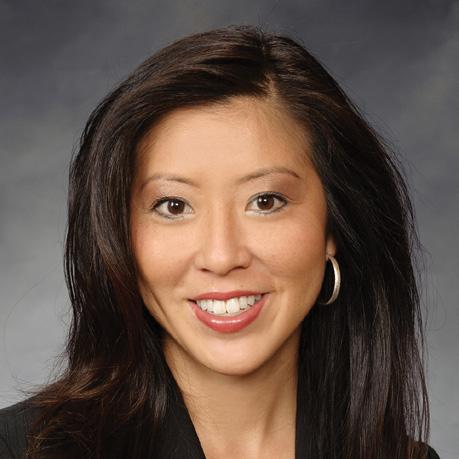
CACM opposes this bill because there need to be provisions that govern how this bill would work in a CID and how these new condo complexes would be managed and regulated in the context of the original, existing association. We have concerns that the bill would result in chaos and confusion in these communities. For example, what does this mean for voting rights? What about common area rights when amenities were designed for a lower health and safety target use? How are these units assessed? What entity is responsible for maintenance and enforcement? And there are many, many more questions.
We are in ongoing discussions with the author and sponsors, but we remain opposed. We are part of a broader opposition coalition that includes realtors, builders, bankers, title and escrow companies, and others. AB 1033 is at the Assembly Appropriations Committee.
AB
648
Valencia: CIDs: Meetings by Teleconference
This bill is co-sponsored by CAI and CACM. It would authorize a board meeting or a meeting of the members to be conducted entirely by teleconference, even when there is no declared state of emergency. We successfully got this bill to the Assembly floor, awaiting a vote. If the Assembly approves it, it will then move to the Senate.
The Center for Homeowner Association Law is opposed to this bill. One of their main allegations is that there is abuse when it comes to counting and tabulating ballots in a virtual context and that the “digital divide” prevents homeowners
from accessing virtual meetings. The Assembly Housing Committee appropriately pointed out that call-in features would still be allowed but also noted that a call-in option would not allow owners to witness ballot counting. They addressed this issue by creating an exception for meetings where ballot tabulation occurs. While we do not like that a physical location is required for ballot counting, having the ability to meet virtually for all other meetings is still better than the current law.
AB 1458
Ta: CIDs: association governance: member election
This bill is sponsored by CAI and supported by CACM. It states that for the election or recall of directors if an association fails to attain a quorum as required in the governing documents, the association can hold a subsequent meeting. At that meeting, the quorum necessary for a membership meeting is reduced to 20% of owners present in person, by proxy, or by secret written ballot.
The Assembly Judiciary Committee believes associations should notify owners that the quorum will lower if not achieved the first time around. Accordingly, they asked for an amendment to include a disclosure in the general notice of the election that if the association fails to receive a quorum, it can call a subsequent meeting at least 20 days after a scheduled election where the quorum will be 20% of members present in person, by proxy or secret written ballot. The committee also imposed an amendment that requires another general notice, no less than 15 days before the subsequent meeting, that includes the date, time, and location of the meeting, the list of candidates, and a statement that 20% of those present in person, by proxy or secret written ballot will satisfy the quorum.
CACM expressed that additional notice is an unnecessary use of resources since it is unlikely to have any effect. The committee and the Center for Homeowner Association Law continue to urge that this notice be individual notice, as opposed to general notice. We will continue to fight against any additional individual notice requirement.
The Center for Homeowner Association Law is opposed to this bill. They contend quorum requirements exist to ensure broad participation by owners, and because associations are “quasi-local governments,” allowing the election of board members by a small percentage of owners violates homeowner rights.
Oppositely, we argue that the inability to achieve quorum paralyzes the association from electing new board members and conducting business. The Center for HOA Law also argues that associations can petition a court or change their governing documents if they cannot achieve quorum. We have argued that both options are unrealistic, as the petition process is expensive and unnecessarily clogs an already overburdened court system. Also, to change your governing documents, you need a quorum that is often higher than the quorum for elections!
AB 1458 passed both the Assembly Housing and Judiciary Committees unanimously. It is now headed to the Assembly floor and will then move over to the Senate.
We are now just finishing the first house policy committees. Bills will soon transition to the opposite house, and the policy vetting process will start over again. Advocacy and negotiations will continue as we work to protect the management industry. If you would like to get involved in advocating for reasonable CID law, click here to learn more about how you can support CACM’s advocacy efforts.
cacm.org | Vision Summer 2023 21
Jennifer Wada, Esq., is an attorney, CACM’s legislative advocate and principal of Wada Government Relations in Sacramento.
Congratulations Managers
It is with great pride that we recognize managers who have taken the next step in their professional career by pursuing advanced educational opportunities. Congratulations to our newest Certified Community Association Managers (CCAM), Certified Community Association Financial Manager (CAFM), and Specialty Certificate recipients for the period of February 24, 2023 through May 19, 2023.
NEW CCAM s
Kim Albin, CCAM
Jordan M. Alcaraz, CCAM
Desiree Aubel, CCAM
Leanne Beck, CCAM
Stefany Bravo, CCAM
Erik Brewer, CCAM
Jeff Buck, CCAM
Mary A. Bullard, CCAM
Matt Chandler, CCAM
Michael Cirillo, CCAM
Adriana I. Diaz-Rocha, CCAM
Chelsea C. Dyer, CCAM
Yvonne Edwards, CCAM
Juli Elliott, CCAM
Lisa Y. Falcetti, CCAM
Sandra R. Garland, CCAM
Naz Hayath, CCAM
Janeth Hill, CCAM
Christine Holcombe, CCAM
Brennan M. Hovland, CCAM
Gail Hoy, CCAM
Jeana Jenkins, CCAM
Joshua A. Jones, CCAM
Alexandria M. Kubski, CCAM
Kelly Larson, CCAM
Cheryl Ann Lawer, CCAM
Stacy M. Lewis, CCAM
Spencer L. Mathey, CCAM
Sheena M. McGill, CCAM
Reina L. Nunez, CCAM
Tania J. Ortiz, CCAM
Megan Paladini, CCAM
Deedra H. Pfaff, CCAM
Narda M. Rangel, CCAM
Jessica R. Roberts, CCAM
Siera Robinson, CCAM
Kory S. Schoenke, CCAM
Brian K. Shrigley, CCAM
Andrea Sipos, CCAM
Annessa M. Sosa, CCAM
Kelsey Thum, CCAM
Salina Toland, CCAM
Marta H. Weisler, CCAM
Tera A. Willis, CCAM
Terry Wolfgram, CCAM
NEW CAFM
Heidi C. Celentano, CAFM
SPECIALTY CERTIFICATES
LARGE SCALE
Eric Kazakoff, CAMEx, CCAM-LS
Samuel L. McKee, CCAM-LS, CAFM
NEW DEVELOPMENT
Katie Alvarez, CCAM-PM.ND
Kimberley Flickner, CAMEx, CCAM-PM.LS.ND
Rashid Kassir, CCAM-ND
Veronica L. Treto, CCAM-ND
PORTFOLIO MANAGEMENT
Katie Alvarez, CCAM-PM
Rosie Galla, CCAM-HR.PM
Margaret Nelson, CCAM-PM
22 Vision Summer 2023 | cacm.org
achieving professional excellence
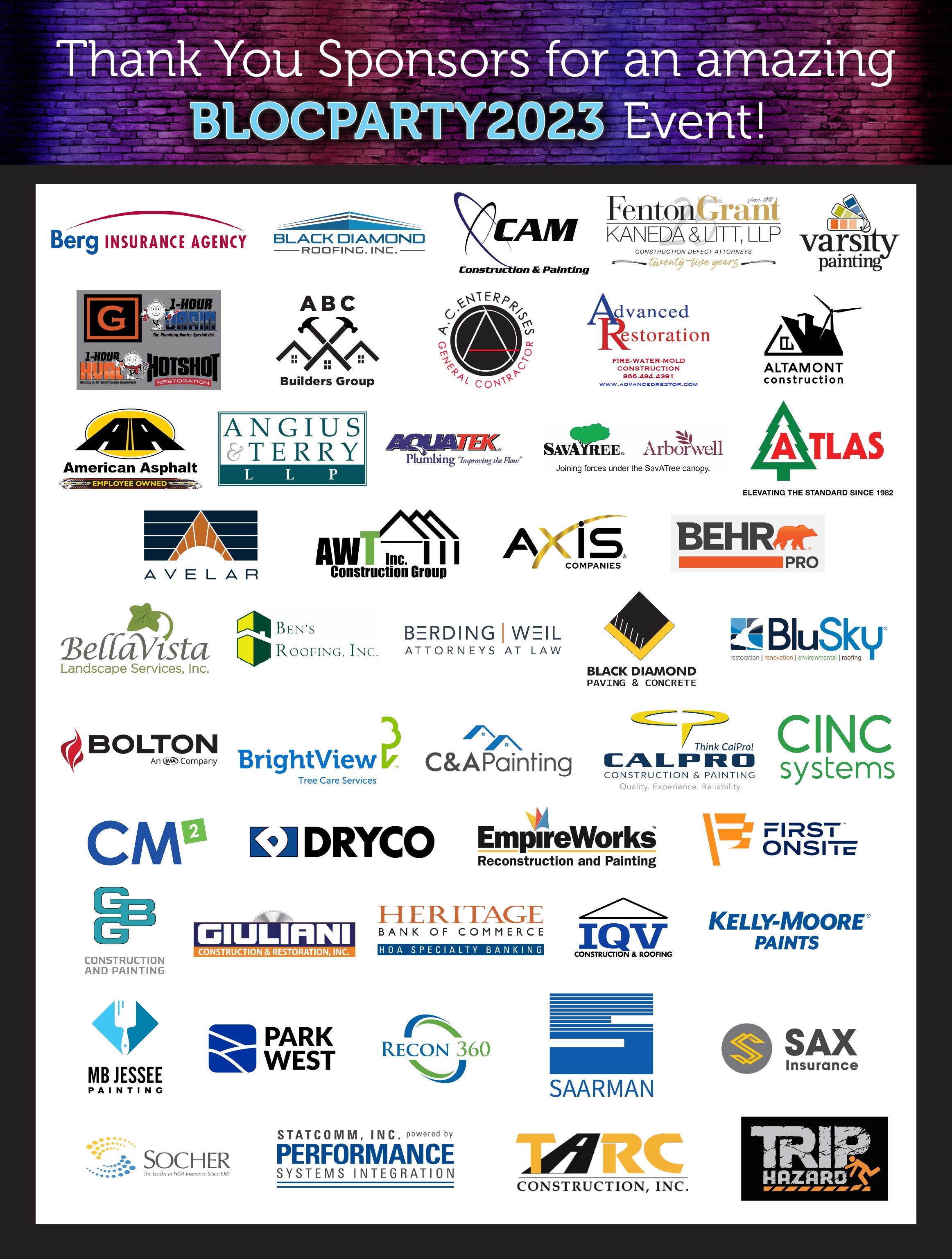
cacm.org | Vision Summer 2023 23
A WORD FROM THE NEW INDUSTRY PARTNER COUNCILS

We thank you for being dedicated members of CACM. As you all know, CACM has programs in place for managers to take courses and earn their CCAM certification to show their dedication to their responsibilities as a leader in the HOA industry. Over the years, we have witnessed the success of this program, and the benefits it has brought to all. It has greatly helped each of our community leaders gain the knowledge, understanding and comfort in their communication with board members, tenants, and co-workers on important topics including management responsibilities, HOA laws, available resources, ethics, and more. We commend you for your time in a position that requires so much patience and attention to detail, and we’re excited to share with you our plans to aid in your continued success.
Knowing the value brought to our communities, CACM decided to create a similar program for the vendors who support you, aka your Industry Partners. The initial step in this journey was putting together two separate Industry Councils, one in the Northern California market and one in the Southern California market.


In those council meetings, we had a nomination and voting process to select your IP Council Chair and Co-Chair positions.
We are happy to introduce your NorCal

Chair and Vice Chair: John Rivera, Director of Client Relations of CM Squared, and Megan Wright, Business Development Manager of Saarman Construction. We are also excited to introduce your SoCal Chair and Vice Chair: Chris Booth, Account Executive, Whitestone Industries and Brandy Arrington, Sales Representative, United Protection Industries, Inc.
The councils have reviewed and approved the California Certified Industry Partner program. This course and certification process will mirror that of the managers with the credits, course hours, and requirements. Our goal is to ensure your industry partners have the knowledge and skills to effectively assist you with your needs. The certification, referred to as the CCIP, serves to add an additional layer of honesty and trust on all sides.
Additionally, both the Northern and Southern Industry Partner Councils have added sub-committees in local regions to plan additional networking and educational opportunities in these sub-markets based on collective feedback from managers based in each location. These local committees are comprised of both managers and industry partners in these regions. These committees meet monthly. From roundtable discussions to educational luncheons, and fun outings to charitable volunteer work, we have many upcoming opportunities for you and your teams to join in on the fun.
Let us know what you would like to see!
24 Vision Summer 2023 | cacm.org
JOHN RIVERA
MEGAN WRIGHT
CHRIS BOOTH
BRANDY ARRINGTON
INDUSTRY PARTNER COUNCIL MEMBERS
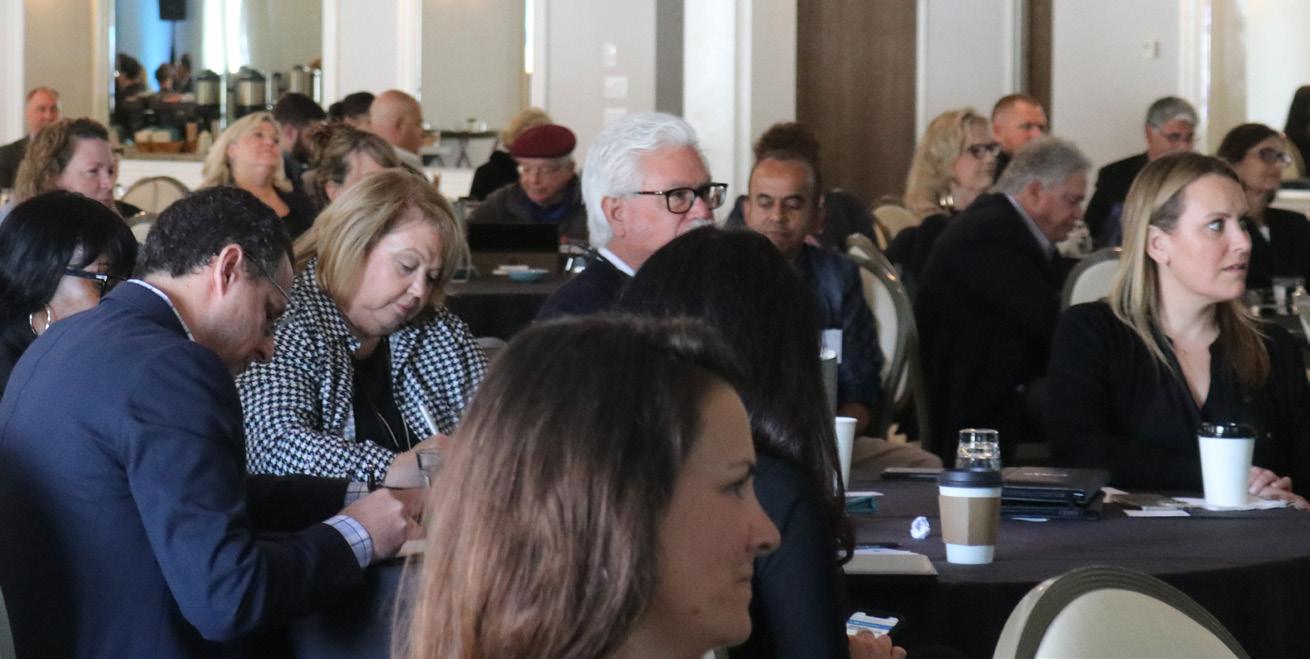
SOUTHERN CALIFORNIA
Amanda Gray - Harvest Landscaping
Amber Welch - Sunwest Bank
Andy Henley - ProTec Building Services
Ashley Hibler – The Miller Law Firm
VICE CHAIR: Brandy Arrington - United Protection Industries
Brian Berce - Golden Alliance Insurance Agency
Brian Henry - Park West Landscape Management
Bridget Nigh - Behr Paint
Cang Lee - Tinnelly Law Group
Chet Oshiro – EmpireWorks Reconstruction
CHAIR: Chris Booth - Whitestone Industries
Christina Oridota - Enterprise Bank & Trust
Cory Neubauer - Roy Palacios Insurance Agency
Darren Seefeldt - Gordian Staffing
Elaine Gower – The Naumann Law Firm
Guillermo Amador, Sr. – Customized Guard Services & Systems
James McCormick - Delphi Law Group
Jeff Beaumont - Beaumont Tashjian
Jolen Zeroski – First Citizens Bank
Laura Thomsen - ServPro Team Brogden
Liron Shalom-Hickey - ServPro of Sorrento Valley
Mark Guithues - Community Legal Advisors
Matt Ober - Richardson | Ober
Mimi Cortes - Sax Insurance
Robert DeNichilo - Nordberg|DeNichilo
Scott Litman – Scott Litman Insurance Agency
Suellen Eichman - Eichman Insurance Agency
Teresa Agnew - Reconstruction Experts
NORTHERN CALIFORNIA COUNCIL
Ben Jonas - HUB International
Chris Lucas - Heritage Bank of Commerce
Donna Vingo - Westlake Royal Roofing Solutions
Jennifer Jacobsen - Baydaline & Jacobsen
CHAIR: John Rivera - CM Squared
Kevin Reid - Recon360
Lorena Gomez - Socher Insurance
Mandi Newton - Varsity Painting
Mark Owens - Reliant Construction Management
VICE CHAIR: Megan Wright - Saarman
Construction
Robert Buffington - Gordian Staffing
Scott Swinton - Unlimited Property Services
Sharon Pratt - Pratt & Assoc.
Sonia Bastidas Fuetsch - First Onsite Property
Restoration
Tara Poole - Precision Concrete Cutting
Terin Reeder-Atkins – A.S.A.P. Collection Services
Wendy Benner Miller - CAM Construction & Painting
Zer Iyer - Hughes Gill Cochrane Tinetti
cacm.org | Vision Summer 2023 25
UNDERSTANDING Financial Statements
By Hamlet Vazquez, MCAM-HR
Aboard of directors may be forgiving if, on a landscape walk, you can’t tell the difference between a Pothos and a Philodendron plant. But, on the other hand, if you don’t know if a pre-paid assessment is an asset or a liability, you may need to start job hunting. In writing an article on understanding financial statements, there are two challenges. The first is keeping it exciting. The second is speaking to a broad audience ranging from seasoned managers who are all too familiar with reading financial reports to newbies who maybe didn’t even realize they would need to know how to read a Financial Statement to be successful in this industry.
As professional managers, one of our primary responsibilities is to help ensure the financial health of the associations we manage, and the financial statement is vital to understanding the degree of that health. Knowing how to interpret financial information is akin to being a doctor assessing a patient’s health or a financial planner analyzing an individual’s financial health.
How, then, do we assess the financial health of an association?
At the most basic level, it starts with proper budgeting. If you don’t budget appropriately for the expenses that you know will be incurred and add some cushion, either by way of a contingency line item or a buffer in each significant line item such as utilities, then the financial health of your association will begin to suffer as soon as the first month of your fiscal year.
With that quick introduction out of the way, let’s look at a typical financial statement.
What is the Financial Statement?
A financial statement is a document that provides an overview of the association’s economic activities every month. It consists of several components that offer a snapshot of the association’s financial position, including income, expenses, assets, and liabilities.
Components of a Financial Statement

No matter the association, every financial statement includes at least the following two components:
BALANCE SHEET
The balance sheet provides a snapshot of the association’s financial position at a specific point in time. It consists of three main sections: assets, liabilities, and equity.
• Assets represent what the association owns, such as cash, accounts receivable, investments, and property.
• Liabilities represent what the association owes, such as accounts payable, loans, and other obligations.
• Equity is the difference between assets and liabilities.
The balance sheet helps assess the association’s financial stability and solvency by comparing its assets and liabilities to determine if equity has increased or decreased at a specific time.
INCOME STATEMENT
Also known as a profit and loss (P&L) statement, the income statement provides an overview of the association’s revenues, expenses, and net income (or loss) during a specific period.
26 Vision Summer 2023 | cacm.org
• It shows how much the association has earned from assessments, fines, and interest.
• It also reflects how much money was spent on various expenses such as utilities, landscaping, repairs, and staffing costs, to name just a few line items.
• To calculate the net income (or loss), subtract the total expenses from the total revenues. The figure arrived at indicates the association’s financial performance during that period.
Essential Items to Review in a Financial Statement
When reading a financial statement, there are several essential items to look for:
INCOME AND EXPENSES
Review the association’s income and expenses on the income statement to understand where the association’s money is coming from and how it was spent. Look for any significant changes or trends in revenues and expenses, and compare them to what was budgeted and to previous periods to identify any irregularities or areas that may require further investigation. It is often helpful for the manager to create a variance report for the board that explains in narrative form why the positive/negative variance exists.
For example, if payroll is significantly over budget, the variance report explanation may be, “This is partially due to California’s supplemental paid sick leave for Covid” or “Overtime has been greater than normal due to regularly scheduled staff calling out sick.” In addition, it’s helpful to include an explanation if the dollar amount is large or if the variance is significant as a percentage of the annual budget for that particular line item.
To illustrate, if you budgeted $1,000 for pest control and spent $800 by March, while $800 may seem small, you may want to explain why the first three months of the fiscal year used up 80% of the annual budget.
RESERVE FUNDS
It’s vital to check the association’s balance sheet for the reserve fund balance and compare it to the most recent reserve study update to ensure that the association has adequate reserves to cover major repairs or replacements of common assets like roofs, roads, plumbing, and pools.
AGING REPORT
Another crucial component to keep an eye
on is the association’s delinquency rate. The aging report will indicate assessments and fees that are past due. It also shows how delinquent the debts are. Given that assessments are the lifeblood of any association, it’s essential to review the aging report every month and follow up accordingly.

BAD DEBT V. ALLOWANCE FOR DOUBTFUL ACCOUNTS
Here, you’ll find an explanation of two terms that new managers and board members misuse or misunderstand most frequently:
BAD DEBT
Bad debt refers to accounts receivable deemed uncollectible and written off as a loss. In other words, it represents the portion of accounts receivable that the association has determined will not be collected and is therefore treated as an expense. Bad debts typically arise when homeowners fail to pay their assessments and cost-effective collection solutions have been exhausted. As a result, bad debts show up as an expense in the income statement of the homeowner’s association, which reduces the association’s net income.
ALLOWANCE FOR DOUBTFUL ACCOUNTS
The allowance for doubtful accounts is a contra-asset account on the balance sheet of the homeowner’s association. It represents an estimate of the accounts receivable that may be uncollectable but still need to be identified explicitly as bad debts. It’s a journal entry based on the board’s assessment of the uncollectible accounts.
To establish the allowance amount, one should analyze historical data, current economic conditions, and specific circumstances related to the association’s accounts receivable. The adjustment aims to reflect a more accurate valuation of the debt on the balance sheet by reducing the gross amount of accounts receivable to the net amount expected to be collected.
In summary, bad debt is the actual amount of accounts receivable deemed uncollectible and written off as an expense. Conversely, the allowance for doubtful accounts is a guesstimate entry on the balance sheet to account for potential uncollectible accounts receivable that still need to be identified as bad debts. Both adjust for uncollectible debts but differ in timing and presentation in the financial statements.
Want to Learn More?
Suppose you want to learn more about understanding financials so you can better advise your clients. In that case, I encourage you to take the following CACM courses because it’s nearly impossible to fully explain or learn the ins and outs of financial statements via an article! And, if you could, it would be such a lengthy article that no one would read it.
So, if you are still confused or want to be better prepared to answer your board’s questions regarding your association’s financial statement, check out the following CACM classes: “Explaining Financial Statements,” “Budgeting for Community Managers,” “Reserves – What, Why, How,” “Assessment Collections,” and “Strategic Financial Planning.”
cacm.org | Vision Summer 2023 27
Hamlet Vazquez, MCAM-HR, is the General Manager at Wilshire Terrace Co-op in Los Angeles.
Knowing how to interpret financial information is akin to being a doctor assessing a patient’s health.
A COMMUNITY MANAGER’S GUIDE TO MANAGING YOUR HOA’S RESERVE FUNDS
by Derek Eckert, RS, PRA
Awell-funded reserve fund is essential for homeowners’ associations (HOAs) to ensure the long-term financial stability of their communities. Reserve studies help associations plan for common asset maintenance, repair, and replacement while providing a roadmap for adequate funding. However, not all managers understand how to manage reserve funds for the association’s long-term financial and physical health. In this article, we will discuss the concept of fully funded reserves, monthly assessments, reserve study review frequency, and the implications of borrowing from reserve funds.
FULLY FUNDED RESERVES: DEFINITION AND IMPORTANCE
A fully funded reserve means that an HOA has set aside 100% of the necessary funds to cover the estimated costs of maintaining, repairing, and replacing common assets over their expected useful life. Approximately one in 10 HOAs are fully funded. However, those not yet 100% funded should have a funding plan designed to get them there eventually.
Achieving a fully funded status is essential for several reasons:
FINANCIAL STABILITY
A fully funded reserve ensures that an association has the necessary funds to cover expenses, reducing the risk of special assessments or deferred maintenance. Special assessments are tough on communities, the members, and their community managers. Additionally, deferred maintenance is the most expensive way to pay for reserve projects, as it can cost as much as three times more when you finally get around to doing the task, which is possibly a life and safety hazard at that point.
FAIRNESS
What do reserves have to do with being fair? By adequately funding reserves, the association ensures that each homeowner pays their fair share of costs during their period of ownership. Remember that fairness extends beyond the current owners and applies to future owners. No future owner wants to buy into a community association only to get hit with a special assessment months later.
28 Vision Summer 2023 | cacm.org
PROPERTY VALUE PRESERVATION
Properly maintained common assets contribute to higher property values, benefiting all homeowners in the community. For example, our firm did a survey and found that on a square-foot basis, condominium homes in an association with solid reserves (over 70%) sold for 13% more than homes in a community with weak funding levels (under 30%). Those are compelling numbers when you consider that most homes in California sell for hundreds of thousands, if not million, and most HOA assessments are only in the hundreds of dollars per month.
MONTHLY ASSESSMENTS: ALLOCATING FUNDS TO RESERVES
The portion of monthly assessments allocated to reserves varies depending on factors such as the age and condition of shared assets, the reserve study findings, and the association’s financial goals. However, the general recommendation is that a condominium association allocate between 15% and 40% of monthly assessments to reserves to maintain a healthy financial status. Annually reviewing and updating the reserve study will help the association determine the appropriate allocation based on its specific needs. For example, an HOA that is 103% funded can likely allocate less than 40% of assessments to maintain a healthy reserve fund. But a community that is 65% funded should contribute as much as its budgetary limits allow.
RESERVE STUDY REVIEW FREQUENCY
In California, the Davis-Stirling Act requires an on-site reserve study every three years, with annual financial-only updates to meet reserve funding disclosure requirements. This yearly review helps the association:
• Adjust for changes in common asset conditions or estimated costs.
• Reevaluate the reserve funding plan based on actual expenditures and reserve contributions.

• Monitor the association’s progress towards achieving a fully funded reserve status.
• Provide the required disclosures to all owners and future purchasers of homes within the community.
BORROWING FROM RESERVES: RISKS AND CONSIDERATIONS
The Davis Stirling Act allows associations to borrow from reserves to meet short-term cash flow problems. While it may be tempting to borrow from reserve funds to cover unexpected expenses or budget shortfalls, this practice can have severe consequences for an association’s financial health. Borrowing from reserves can:

• Deplete the reserve fund, leaving the association unprepared for future common asset expenses.
• Create a reliance on reserve borrowing, masking underlying budget issues and delaying necessary financial adjustments.
• Result in special assessments or increased regular assessments to replenish the reserve fund, placing a financial burden on homeowners.
• Cause delays in significant repairs and replacements of components that could present a life and safety hazard, such as foundations, decks, and elevated walkways.
Before borrowing from reserves, an association should carefully weigh the risks and consider alternative funding options, such as implementing cost-saving measures, adjusting the budget, or levying a special assessment.
Additionally, before you borrow from reserves, you should contact your reserve specialist and financial manager to determine the immediate impact on the overall health of the reserve fund.
SUMMARY OF THE TIPS FOR MANAGING RESERVE FUNDS
Understanding the intricacies of reserve studies and their implications for an HOA’s financial health is crucial for longterm success. By striving for a fully funded reserve status, allocating an appropriate portion of monthly assessments to reserves, reviewing and updating reserve studies regularly, and cautiously approaching reserve borrowing, associations can avoid surprise expenses, make informed decisions, save money, avoid loans and special assessments, and protect property values. That makes proper management of the reserve fund a win for everyone.
cacm.org | Vision Summer 2023 29
Derek Eckert, RS, PRA, is the President of the Association Reserves’ Northern California division.
Reserve studies help associations plan for common asset maintenance, repair, and replacement while providing a roadmap for adequate funding.
Apathy TRANSFORMING INTO
Engagement
By Rob Buffington
In the HOA industry, we like to talk about our good HOAs and bad HOAs. Or, after a drink or two, our easy HOAs and that one ridiculous HOA. While there’s no question that there are different types of HOAs, the truth is that every HOA has challenges; the difference is whether you are experiencing positive engagement to balance out the problematic aspects.
As an HOA manager or executive, your main goal is to ensure that the community you manage runs smoothly and that residents are happy. One of the best ways to do this is by driving engagement within the community. This article provides some tips for HOA managers to drive engagement in the HOAs they manage. So, if you want to transform apathy into participation in the communities you work with, keep reading.
Communicate Effectively
One of the most essential things an HOA manager can do is to communicate effectively with residents. Keep them informed about community news and events, important updates, and changes to policies or procedures. Use multiple channels to communicate with residents, such as email, social media, newsletters, and community forums. Find what channel gets the best results and use it rather than relying solely on snail mail and posted notices. Regular communication helps to ensure that residents are aware of what’s happening in the community and how they can get involved.
Most people dislike HOAs because their only genuine interaction is when they receive a violation letter for a rule of which they were probably unaware or a collection and late fee notice for an assessment payment the owner didn’t realize they missed. Don’t let that be your first interaction with homeowners. While getting homeowners’ attention on more positive matters may be difficult, the extra upfront work will pay off down the road.
Create a Sense of Community
Creating a sense of community is crucial to driving engagement in an HOA. Encourage residents to get to know each other by organizing events such as block parties, potlucks, or game nights. Create shared spaces where residents can gather and socialize, such as a clubhouse or community garden. Building relationships and creating a sense of belonging will help residents feel more invested in the community and more likely to participate in events and activities. Convince your boards to establish a budget line item for holiday parties, community events, and refreshments for the annual meeting. A $25 gift card for the winner of a holiday lights contest can save the HOA countless headaches down the road.
Be Responsive
Homeowners’ biggest complaint when looking for a new manager is a perceived lack of responsiveness. While we understand the pace at which things move in an HOA, many homeowners do not. Taking the time to educate them and manage expectations can reduce complaints and help build rapport with homeowners.
30 Vision Summer 2023 | cacm.org
One of the simplest ways to do this is to respond to every email within one business day. A common mistake among overworked managers is to only respond to emails once there is something to report. However, a simple “I’ve received your email and have requested a bid from the vendor to present at the next board meeting in six weeks” can let people know that they are heard and manage expectations on when to expect resolution. Similarly, the more information you provide on what’s happening behind the scenes, the more understanding homeowners will be about delays.
Provide Opportunities for Involvement
If the only way a member can get involved is by serving on the board of directors, prepare for engagement and participation to suffer. Most members fear the time and energy commitment that being a board member takes, not to mention what it might do to their relationships with their neighbors. Providing other opportunities to help out in more minor ways is a phenomenal way to ramp up member involvement. Consider establishing committees, clubs, or groups that allow members to volunteer their time and talents without having to run for election.
Be Transparent
There will be times when members make requests that cannot feasibly be honored due to legal, financial, or other restrictions that the requesting owner needs to be made aware of. To them, the proposal to replace the rear park that borders a protected wildlife habitat slope with a community pool seems reasonable. So, when the

manager and board dismiss it with a laugh before closing the homeowner forum, they feel angry and upset.
Instead, when you find yourself in this situation, be transparent. Explain why the request is outside the association’s means to honor. When possible, direct them to outside resources such as building codes or insurance requirements that back up the board’s position. It’s the nature of the job to be the bearer of bad news, but how you bear that news can make all the difference.
Celebrate Successes
In a for-profit corporation, at least once a year, the CEO or President gives a speech in which they call out and celebrate the past year’s successes. In the United States, which is like a vast common interest development, the President gives the annual State of the Union address wherein they do the same. So, why don’t our non-profit homeowners’ associations follow suit?
Imagine if, in the annual budget package or at the annual meeting, the President included a message celebrating everything the board, committees, and association members accomplished over the past year before opening up the floor for the homeowner forum. Wouldn’t that make for a much more positive and peaceful discussion? Aren’t the members more likely to feel like their HOA is a great place to live if the community’s successes are acknowledged?
Address Concerns
One of the biggest reasons residents disengage from an HOA is because they feel their concerns are not being listened to or addressed. As an HOA manager, it’s crucial to take resident concerns seriously and address them promptly. Hold regular meetings with residents to discuss their concerns and provide updates on what actions the board is taking to manage them. Addressing concerns shows residents that their feedback is valued and encourages continued engagement.
Use These Simple Steps to Drive Participation
Driving engagement within an HOA is essential for ensuring the community runs smoothly, and residents are happy. By communicating effectively, creating a sense of community, providing opportunities for involvement, being transparent, celebrating successes, and addressing concerns, HOA managers can encourage residents to engage with the community and feel invested in its success.

cacm.org | Vision Summer 2023 31
Rob Buffington is the Owner of East West Building Works and President of Gordian Staffing, both of which are located in San Jose.
THE NOT-SO-SURPRISING IMPACT OF RECESSION ON HOA COLLECTIONS

Homeowners associations are essential for maintaining the integrity and value of communities. However, during a recession, these groups are often hit hard. With an increase in collection cases, combined with rising costs for using licensed collection services as the law now requires, many associations worry about making ends meet.
In this article, we’ll uncover the surprising impact of the recession on communities. From changes in laws governing collections to financial challenges, we’ll delve into the issues these groups face. We’ll also provide steps to help associations weather the storm and emerge stronger on the other side. So, if you’re a manager of one or more associations, buckle up – we’re about to take a deep dive into the world of HOAs during a recession. However, even well-seasoned management executives can benefit, as collection laws and best practices have shifted since the last recession, and technology is changing the collection game.
by Dee Rowe, CCAM
32 Vision Summer 2023 | cacm.org
CHALLENGES WITH COMMUNITY PARTICIPATION
A recession can have a significant impact on homeowners associations, but the biggest challenge is maintaining community participation during tough times. Not only do the financial strains make volunteering and donating harder for members, but the emotional toll of the recession can also lead to disengagement and apathy. This lack of involvement can create communication and decision-making obstacles for the association, hindering its ability to navigate economic turbulence. Moreover, when families need help making ends meet, paying dues or participating in fundraising efforts may be a low priority.
Encouraging community involvement is essential for managers of homeowners associations so clients persevere and thrive during a recession. Finding creative ways to incentivize participation and reenergize

members can make all the difference in maintaining the association’s vitality.
One way to accomplish this is to provide information on resources that may help financially challenged individuals, such as letting members know about COVID-19 state assistance programs or inviting a banker to an event to provide information to members on refinancing, investment, or other tactics that can ease their financial burden.
Another suggestion is creating committees or volunteer programs to collect and distribute food donations or assist community members with difficulty covering expenses. Provided a well-worded Committee Charter is adopted to govern the volunteers, such an action requires minimal association resources and shows those in hard times that their neighbors (and the board and management company) care.
FINANCIAL CHALLENGES
It’s no surprise that balancing the budget can be a significant challenge for HOAs during tough economic times. The recession can bring a range of financial challenges that make it difficult for members to pay assessments, and the emotional toll of the financial instability leads to apathy and disengagement. In addition, as fewer members pay dues on time, the strain on the operating budget grows.
The growing economic pressure often leads boards to increase assessments to cover the gap between costs and income. Not only do these increases in assessments make it even harder for homeowners behind on payments to catch up, but they also increase the burden on the members paying on time. The owners that pay on time can start to resent those that aren’t, as many boards and managers observed in the financial housing crisis of 2008. It’s a vicious emotional cycle with the potential to destroy community morale.
To mitigate this, managers and boards should focus on fair and equitable collections. For example, instead of immediately moving toward foreclosure, work with a licensed collection firm that works with debtors to find creative funding and payment plan solutions so that members pay down their debt without threats of losing their homes. Doing so has the additional benefit of collecting funds at the front end of the process vs. being paid at the back end of a foreclosure proceeding, as I learned when chatting with collections expert Mitch Drimmer of Axela Technologies, Inc.
CHANGES IN LAWS GOVERNING COLLECTIONS
In California, Senate Bill 908 became effective on January 1, 2021, indicating that any entity collecting money requires a license and background check. Since then, the Department of Financial Protection and Innovation clarified that routine collection of assessments is not consumer debt and is not subject to the licensing requirement. However, collections are still an area fraught with liability. In addition, case law is often not in favor of the collector. Therefore, using an affordable, reputable, licensed collection solution is a best practice.
Continues on page 34
cacm.org | Vision Summer 2023 33
RECESSION IMPACT,
Continued from page 33
However, this has yet to be the practice. Instead, management companies have traditionally done early-stage collections in-house to earn extra income. They are often hesitant to outsource for fear of losing the administrative income from collection actions, such as sending pre-lien and lien notices. But, believe it or not, there is a better way.
By using a non-predatory, licensed collection firm, management companies no longer have to employ staff to run reports, assess late fees, send notices, file pre-liens and liens, or take emotionally charged calls from angry debtors who feel they’re being targeted unfairly. The headache of high turnover of collection staff disappears as all calls get forwarded to the agency to protect the consumer’s rights under the Fair Debt Collection Practices Act (FDCPA)
As I discussed with James McCormick, Jr. of Delphi Law Group, LLP, while preparing for this piece, the management company and team are also protected from liability should a debtor file a suit claiming that their rights were violated or, even worse, open a fair housing claim stating such. Finally, some collection firms specializing in association collections structure their programs so that the management company benefits financially from the relationship in addition to the association the firm is collecting for.
STEPS TO WEATHER THE STORM
During difficult economic times, managers and management companies must take proactive steps to help members weather the storm. Here are some strategies that can help:
1. COMMUNICATE REGULARLY
Maintaining open lines of communication with members during a recession is essential. It is crucial to keep everyone informed of financial challenges and any progress made toward addressing them. Providing updates via email or social media can keep members engaged and connected. If your clients haven’t opted for electronic communications yet, recommend that they do so.
2. REDUCE COSTS WHERE POSSIBLE
When members are struggling financially, the HOA needs to minimize expenses where possible. This could mean negotiating better deals with service providers, cutting back on non-essential expenses, or finding ways to reduce energy consumption. It could also mean reducing collection costs by using licensed firms first and saving the high-ticket attorney fees for those rare cases when it’s unavoidable. If you need help finding a reputable collection service, check out CACM’s Industry Partner Directory.

3. INCREASE COMMUNITY INVOLVEMENT
During tough economic times, homeowners often disengage from their community. To prevent this, HOAs can organize volunteer opportunities or neighborhood events to unite members. This can foster a greater sense of community and encourage members to manage their finances so that dues get paid on time.
4. BE PROACTIVE IN COLLECTIONS
In a recession, it’s not uncommon for members to fall behind on paying their dues. Therefore, managers must advise clients to make every effort to collect these dues promptly using the most efficient and affordable method possible to avoid financial strain. In addition, working with a licensed collection service is recommended to avoid costly collection mistakes like accidental violations of the FDCPA. Delegating collections to a firm that specializes in such can improve the management company and association’s bottom line.
5. LEVERAGE TECHNOLOGY
One of the ways you can advise clients to reduce expenses and improve the bottom line is to leverage technology to work smarter, not harder. Technology can streamline timelines and reduce costs for payment processing, communications with members, distributing notices that the law does not require to be mailed, and even collecting delinquent payments. For example, does your collections solution include the following:
· An online self-resolution portal so debtors can act to resolve debt without having to speak to a live person?

· The ability for management staff and boards of directors to access ledgers, notices, and communications in real-time from anywhere at any time?
· Electronic approval and signing of legally required collection resolutions on your smartphone, laptop, or tablet right there at the board meeting where the vote occurred?
If it doesn’t, it should. These tools significantly expedite the collection process, putting recovered assessments in the association’s hands faster and at a lower cost.
It’s unsurprising that recessions impact association finances, collections, and community engagement. What’s surprising is how little some do about it. However, by fostering a strong sense of community participation and managing finances and collections wisely, associations can weather the storm and emerge stronger. As the saying goes, “Tough times don’t last, but tough people do.” So, let’s toughen up, protect our associations and their members, and come out stronger on the other side.
34 Vision Summer 2023 | cacm.org
Dee Rowe, CCAM has been a Certified Community Association Manager in California since 2011.
maintaining high standards
New Individual Manager & Management Company Members
CACM members further their success in the industry and benefit by partnering with colleagues to share new ideas and best practices. Please join us in welcoming these members from the first quarter of 2023 (January 1 – March 31.)
MANAGER PROPLUS
Roxi Bardwell
Vivian Beirami
Jenna Dever
Cheska Gonzalez
Rodney Hart
Acacia Young
MANAGER PRO
Yvonne Akuamoah
Naomi Allan
Daniel Alonso
Maria Arias
Chloie Arnold
Stacey Baker
Christy Ballou, CCAM
Alex Beleutz
Melissa Bell
Zachary Bender
Mary Bullard, CCAM
J. Michael Carr
Sonia Castro
Julie Clausen, CCAM
Bella Costa
Karen Couwenhoven
Karen Cubas
Regina Dantico
Emily DelCampo
Mario Deleon
Adriana Diaz-Rocha
Karissa Dolan
Maylina Estrada
Megan Evers-Howard
Mark Falcone
John Fernandes
Clinton Fine
Kevin Finnen
Diana Gable
Jerri Gaddis
Brian Gallegos
Tiffany Gamble
Martha Garcia
Shelby Gardner
Sandra Garland, CCAM
Kassandra Giamapapa
Maureen Gonzales
Nicolas Gonzalez
Ofelia Gonzalez
Jeff Gorman, CCAM
Genney Groesbeck
Priscilla Guzman-Valencia
Mallorie Hall
William Hamilton, CCAM
Stephanie Hansele
Soraya Hernandez
Vy Hua
Marcos Huerta
Joseph Hughes
Maryanne Hurley
Cynthia Jonas
Daniel Jones
Deborah Jones
Chris Kropf
Nia Landeros
Christina LaScala
Oanh Le
Minho Lee
Katrina Leiva
Karen Liebrecht
Mike Livak
Marcie Lopez
Elizabeth Loveton
Seema Makwana
Andrew Marble
Zahara March
Marie Marshall
Raelene Martinez
David Mayemura
Daniel McClain
Larry McCroskey
Mary McFadden
Hannah Michalak
Edith Millan
Beau Miracle
Shawna Morales
Darrell Muhammad
Robyn Jennifer Myers
Meaghan Ogilvie
Tania Oregel
Lauren Ornelaz, CCAM
Margarita Ortiz
Therese Oxford
Roger Paul
Nicolle Payne
Josephine Perez
Ciara Preciado
Mary Rigg
Yvonne Rodarte
Ivonne Romano
Jennifer Sanocki, CCAM
Yoselin Santana
Kristen Saucedo
Melinda Scalese
Annell Schmutzler
Lesha Scully
Anita Smith
Aurora Smith
Paulette Smoot
Morgan Stechler
Sydney Stokes
Daniel Szathmary
Sandra Tait
Salina Toland, CCAM
Steffenie Tollette
Stefany Tristan
Leonard Urso
Alexandra Volman
Marta Weisler, CCAM
Mandy Wideman
Terry Wolfgram, CCAM
Brittany Zamora
BUSINESS PLUS
The Ibis Group Inc.
Walnut Creek | (925) 665-0441
www.theibisgroupinc.com
Jenkins Properties Management Company Montrose | (818) 542-6850
www.jpmc2000.com
JLA Real Estate Group Riverside | (951) 784-0999
www.jlareg.com
Miracle Realty Madera | (559) 674-0091
www.miracle-realty.com
Partners Community Management Pasadena | (626) 529-3918
www.partnerscm.com
BUSINESS
Allure Total Management
San Marcos | (760) 804-8290
www.alluretm.com
BJ Management Solutions, Inc. San Jose | (408) 781-9186
www.bjmanagement.net
openworldproperties.com
Oakland | (510) 250-0946
openworldproperties.com
Star Management
Tustin | (714) 480-6830
starmanagement.com
cacm.org | Vision Summer 2023 35
By Lorena Sterling, CAFM
Are you SecurelyInvested?
About three months ago, many communities were overly invested in a financial institution that failed. That means they invested funds exceeding the $250k FDIC rule. Boards pacified concerns raised by managers with the phrase, “Not us,” and now we’re hearing, “I never thought it would happen to us.” So, this is a clear opportunity to buckle down and assess our clients’ investment accounts with three words: safety, accessibility, and interest.
Investing HOA Funds: Certificates of Deposits
Last year, CD interest rates yielded about 0.15% for a 12-month term. Those were safe times to invest, knowing the 1120H IRS filing kept the initial $100 of earned interest income exempt from taxation. After that, expect investment income to be taxed about 38% by the state and federal governments.
But the days of earning $150 off a $100,000 investment are over! Financial institutions are now offering up to 5.05% CD rates for promotional terms of 13 months. So, that same $100,000 investment is now worth $5,050, less the 38% that goes to taxes. So, instead of netting $131, associations net $3,131 for every $100,00 invested. When associations invest half a million dollars or more, investment profits can accumulate quickly.
Create a laddered investment plan according to the reserve study, and stay organized with maturity dates; sometimes, an auto-renewal can cost you a lower interest rate versus
closing that CD and reinvesting into a new rate and term. What is laddering? Laddering is purchasing CDs at different times or staggering maturity dates, so funds are continuously maturing and being rolled over or reinvested.
It’s essential to consider upcoming spending for reserve repairs and any planned capital improvements, as once invested, funds are “locked in,” and there could be penalty fees for early withdrawal. So, make sure to keep sufficient funds liquid to cover upcoming expenses.
Things to consider before “locking in” funds:

• Ensure invested funds can be liquified for emergency expenses if necessary.
• Stagger maturity dates for multiple CDs.
• Consider the $250K FDIC-insured investment per institution and aim to ensure that you aren’t investing more than that in any one bank.
Taking the P for penalty:
What would it look like if your maturity date is a few months away and you want to take advantage of the highest interest rate we have seen in over two years? Time to be risqué and take the letter P for penalty. Yes, for once, you can advise clients to think outside the box, safely.
Early withdrawal penalties differ by bank institution, the amount invested, and the
36 Vision Summer 2023 | cacm.org
SecurelyInvested?
length of the term. You can expect penalties to range anywhere from 30-180 days of interest based on the amount initially invested. So, for that $100k CD that accrued $150 in 12 months, you will be penalized at most half of its annual interest.

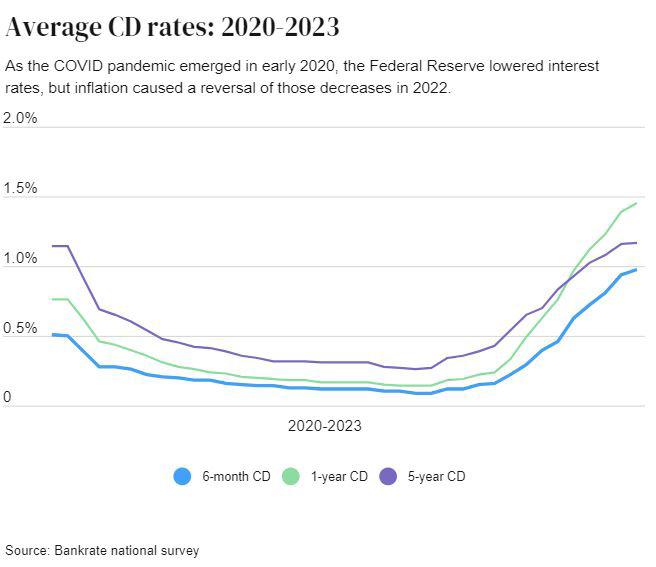
Let’s do the math:

$100,000 yielding 5.05% for 13 months = $5,050
$5,050 – $75 (Penalty Fee) = $4,975.00

$4,975 - $1,508 (Taxes) = $3,467.00
$150 vs. $3,467.00 in interest!

Advising Clients About Investing

Homeowner association funds should avoid risky investments at all costs. Boards have a fiduciary duty to ensure that funds are protected, and managers have an ethical obligation to advise their clients of their commitment. As managers, we must recommend that our boards invest with capital preservation in mind and consider safeguarding reserve funds. But we can also advise them to take advantage of investment income opportunities that are safe and secure. So, consult with your financial managers, bankers, CPAs, and reserve analysts to assist you with choosing suitable investment strategies for your community.
We now have the creative ability to invest HOA funds, even if that calls for a penalty to maximize your CD rate of return.
cacm.org | Vision Summer 2023 37
you
Lorena Sterling, CAFM, is the Controller at Community Association Financial Services (CAFS).
Iwas poking around the grounds of a local HOA last week on a quest. The sky was blue, and the fragrance of jasmine and orange blossoms stirred the air. It was an arc of color, unexpected on this clear day, that had me treading the soft turf and peering under bushes. Suddenly, springing softly out from its hiding place in a tangle of wisteria, a unicorn bounded out onto the lawn. Yep, the rainbow had ended somewhere near here. And, only a few yards away, bathed in technicolor light, a gaggle of happy homeowners sat upon a checkered picnic blanket, smiling, chatting, and glad to be a part of the grand experiment known as a common interest development (CID).
J. K. Rowling and the Brothers Grimm would be cringing beside you. Strike fairy tales from my resume. Truly my story is trite, but G.K. Chesterton, the great English writer, and philosopher, had something interesting to say about fairy tales: “Fairy tales do not tell children dragons exist. Children already know dragons exist. Fairy tales tell children the dragons can be killed.”
My little tale attempts something similar. It doesn’t tell us that a technicolor utopia exists but suggests that with a bit of imagination – it might. And for that matter, we need not go so far as utopia. In fairy tales, giants, beanstalks,

38 Vision Summer 2023 | cacm.org
witches, and gingerbread houses all stand for greater unavoidable realities or ambitions that cannot be subdued. Fairy tales give hope that the hard truths in life are not entirely unbeatable or unattainable. One can kill the evil witch, thwart the wicked stepmother, and wear glass slippers to the royal ball.
In my silly introduction, I visited the ideal utopian association. Yes, it’s unattainable. But like in beloved fairy tales, it’s still worth reaching for. The grand common interest development experiment, launched in earnest over 50 years ago, was intended to provide a high standard of living for a wide swath of Americans looking to enter the home-buying market. In truth, it did just that. Despite the growing pains, owners of properties in HOAs are served well by the experience. Of course, we shouldn’t hunt for pots of gold in the CC&Rs, but it’s worth the effort to search for a good life where conventional wisdom has painted tangled thorns, dragons, and sorcerers.
Thorns and Roses
I was talking with a lovely manager the other day, and she told me a story about a homeowner that had recently moved into an HOA. This owner was pleased with the community management, had been nominated for the board of directors, and was happy to have other professionals in charge of maintenance and repairs. The new owner told this manager, “I love living in my HOA, and I’d make the decision again.”
In this story, the new homeowner knew what she was getting herself into. She knew there would be rules. Of all people, she could have made an informed decision to avoid buying into an HOA. But instead, she embraced the constraints as a blessing, not a curse. The thorny rules and regulations that trigger malcontents are roses to those who understand the profound benefits of community and cooperation.
Is it possible that some personalities are not meant for HOA life? Sure. But history has repeatedly shown that education, understanding, and patience have moved many from angst to acceptance and even earnest advocacy of the community.
Dragons and Neighbors
In the Dark Ages, peasant-eating dragons were defeated by brave knights. This has mercifully changed in the recent literary and cinematic past. Can dragons be tamed, after all? It seems as if.
Pixar’s How to Train Your Dragon reveals that (spoiler alert!) the fearsome and pesky dragons were deeply misunderstood and, gasp…affectionate! The moral is that humans can appreciate dragons, and dragons can trust humans.
Individual homeowners within a CID can often be misunderstood and feared, and they may need to be more trusting of management and board members. Admit it; it’s not a bad analogy. But in talking to a Hercules, CA homeowner, previous board member, and happy resident within an HOA, Aisha never once hinted that dragons were lurking. Instead, she said she enjoyed being on the board of directors because she met more of her neighbors. She liked the snug neighborhood because she liked the people.
Dragons create smoke, fire, and hysteria. If you have even one, you can be stung by flying sparks. This is the risk of living in close proximity with others. But is this truly unique to the HOA? Of course not. The narratives have spun rogue and insinuated that HOAs are uniquely vulnerable to dragons. This is, of course, false. The workplace, families, apartments, local governments, and schools all present realities where dragons roam and where the bullied may be much more vulnerable than in any HOA.
Conflict resolution, in truth, is far more accessible in the HOA than in most other spheres. Dragons can change, and the HOA structure provides a framework to facilitate the transformation.
Saruman the Sorcerer to Gentle Gandalf
In literature, you won’t find many sorcerers changing their ways. Unfortunately, HOA managers are often cast in the role of Sorcerer Supreme, throwing lighting storms and curses from monolithic white towers. And if that’s you, stop doing that.
But the wise manager scripts their role less like Tolkien’s Saruman and more like the sagacious Gandalf. In The Lord of the Rings (LOTR), Gandalf assembles a motley fellowship of unlikely leaders. He provides encouragement, guidance, and protection. Isn’t this an apt comparison for the HOA manager?
Like Middle Earth in the LOTR trilogy, California CIDs are in a time of substantive change. Is it worth the effort to bring CIDs to a healthy maturity? When as many as 65% of California homeowners live in an HOA, the answer becomes obvious, yes. Managers are the wizards tasked with encouraging owners to make good decisions, guiding them toward peaceful and positive solutions, and protecting the members they serve with an understanding of the law and an army of informed industry partners.

The CID experiment is young compared to other community forms, but it’s here to stay. I recently attended an event where some of the early pioneers in California CID governance and organization were honored. I sat at a table with several owners and board members of local communities. They were happy and content. They loved their homes and their neighbors. They were proud to serve their community.
This is the narrative of the next generation. As this industry leaves adolescence, it will find firmer footing, grace, and the stability that comes with adulthood. With maturity, perspectives can change. Likewise, as attitudes change, so will the narrative. So be on the lookout for rainbows and scampering unicorns coming to an HOA near you in the future.
cacm.org | Vision Summer 2023 39
Scott Swinton is the General Contractor and Certified Construction Manager at Unlimited Property Services, Inc.
ANNUAL BUDGET BEST PRACTICES AND TIPS
 By Andrew Hay, CAMEx, CCAM-ND.PM
By Andrew Hay, CAMEx, CCAM-ND.PM
Why does it feel like it’s always budget season? When one budget season ends, another begins, and even when we are proactive, we find ourselves scrambling at the end to get those last few budgets out. While we can’t always control our client’s decision-making timeline, here are some best practices and tips to better prepare you for your next budget season and to ensure the budgets you present to your clients are responsible representations of their community’s needs.
40 Vision Summer 2023 | cacm.org
Analyzing and Interpreting Financial Reports
The biggest key to a successful (and primarily painless) budget season is analyzing and interpreting your financials correctly. All too often, a manager looks at the financials for the first time as they sit down to prepare a budget. Unfortunately, if that’s what you are doing, you are late to the game and destined for struggle.
Take time each month to review the balance sheet and budget to actual reports to truly understand what’s happening at the association. Pay attention to accounts receivable and accounts payable line items on your financial statements because these can be early indicators that your community is struggling to collect funds or pay its bills.
If you see any ‘due to’ or ‘due from’ items on your balance sheet, research what is causing this, as those entries would not be there if there weren’t an issue. After you’ve researched and understood the problem(s), make the board aware of it. Be sure to bring these items up before your budget meeting. Volunteer board members have too much on their plate. They often need additional time to process financial details, so the earlier and more often you can share information with them, the smoother that budget meeting will go.
The budget comparison report is likely the most helpful tool within the financial statements. This report gives you a monthly picture of how the
association is doing against its budget and often is the first indicator of budget issues. Know this report from top to bottom. If you need help understanding it, seek out as much information as possible from your financial manager or staff accountant and share it with your clients. It will only strengthen your standing with them and help build the rapport needed to retain clients for the long term.
Remember to Include Annual Expenses
Understand when you have expenses that hit the financials once a year because we often use 6-month financials to prepare a draft budget for the next year and can be over or under budget for items simply because we forget to include an annual expense that hasn’t hit the books yet. Don’t rely on the current year’s financials alone to help you prepare your budget. Instead, pull the year-end budget comparison reports for at least the last three years to review historical spending and incorporate that into your budget logic.
The Importance of Proper Invoice Coding

Another best practice is to ensure the budget comparison report is the most accurate by properly coding your invoices and splitting out flat fee
Continues on page 42
cacm.org | Vision Summer 2023 41
When you fail to plan, you plan to fail.
BUDGET BEST PRACTICES,
Continued from page 41
expenses vs. ancillary costs. This way, you do not have large buckets in your budget that contain both fixed and variable expenses, making it much harder to understand and adequately fund.
The most straightforward example would be to have one line item for your monthly flat fee landscaping cost and multiple other line items for variable expenses like irrigation repair, plant replacement, tree care, and related pest control treatments, like those to eradicate aphids. Detailed coding not only helps you to prepare a more accurate budget but also helps you and your client understand where the money is going.
Talk to the HOA’s Service Providers

We all rely heavily on the vendors that serve our communities. However, if we include them in the budget preparation discussion, we are taking advantage of a valuable opportunity to make our lives easier and more successful. Conversely, failing to include service providers in budget discussions sets you up for failure.

As you begin to prepare a draft budget, it is critical that you check in with all the association’s service providers, including utility companies, to see what they anticipate will be changing in the next 12-18 months. This will help decrease the likelihood of needing to do a mid-year budget increase or reduction in service due to rising expenses.
Having these conversations with vendors can also help you avoid uncomfortable conversations with your boards about vendor replacement or service simply because they receive a contract increase notice two months into the fiscal year, and the budget doesn’t support it. Additionally, these conversations can give you leverage in a discussion about a mid-year increase if you remind that vendor that you asked them about fee changes only a few months earlier, and they didn’t indicate there would be any.
Finally, knowing and paying attention to utility company rates is also a key to budget success. Many utility companies post rate increase schedules multiple years in advance, so take the time to look at their sites and even set up Google alerts, so you receive any relevant articles that can prepare you, and your clients, for rate increases.
Be Familiar with the Reserve Study
The most considerable assets in any association are typically reserve funds, but how many managers spend more time going through and updating the reserve study vs. the operating budget line items?
A reserve study is essentially a budget, so managers must give reserve study providers accurate information annually. This includes conversing with your board members early in the year about what reserve projects they plan to do not only that year but in future years. The more information you can provide to your reserve study preparer, the more accurate the reserve study will be.
Pay attention to the remaining lives of components and find out from your clients if they plan to do projects based on the reserve timelines or if they plan to extend the life based on the condition of the components. A detailed component list is critical to ensuring your reserve analyst doesn’t have things in the study that no longer exist or are not missing features.
Don’t accept a small component list if you know the association has many buildings, amenities, or reserve items. A reserve study with only a lump sum for component items that may be on different life cycles (i.e., paint on buildings, boilers, elevators, various pool and spa heaters, and roofing systems) is not a way to accurately prepare your budget. Suppose your reserve study provider cannot provide a detailed list of components. In that case, it’s likely time to find a new one. A comprehensive component list is a reasonable request to make.
Recommending Increases Without Upsetting Clients
Don’t be afraid to show a budget increase but know why you recommend one. For example, is it due to inflation, to bump up reserve funding levels, or to cover rising expenses for aging components like plumbing? If you adopt all the above practices, it will make for an easier conversation with the board, and they’ll be expecting an increase if you’ve kept them informed along the way.
Even when presenting a significant budget increase, you have an opportunity to shine and show substantial value to the client if you can clearly and confidently articulate why you are making this recommendation. You can do this without the negative tone of blaming vendors, insurance providers, or utility companies for the increase if you’ve kept the board informed throughout the process and have done the research to support and explain why the board needs to increase assessments.
Don’t promise that an increase is temporary, as that’s not fair or responsible unless you know it to be factually accurate due to some anomaly. It is usual for assessments to increase over time in communities. The more we prepare ourselves and our clients for that reality based on research and facts, the easier that increase will be received by our clients and their homeowners.
Summing Up These Budget Best Practices
If you are not taking the budget season as an opportunity to shine and show value to your clients, you are missing out. If you are not doing these best practices proactively, you create unnecessary stress in your workday. Even if you try just one or two of the recommended best practices, you will find that this budget season will be your smoothest yet. As the famous saying goes, “When you fail to plan, you plan to fail.” Plan now and watch yourself succeed this budget season.
42 Vision Summer 2023 | cacm.org
Andrew Hay, CAMEx, CCAM-ND.PM, is the Chief Executive Officer of The Helsing Group, Inc.
JOIN US FOR A FUN DAY OF GOLF


Join us for a fun day out on the course. Whether you’re an experienced golfer or if you have never swung a golf club before, Swing and Swag is the event to meet with peers and colleagues, network, pick up some swag and enjoy a day in the sun. Practice your putting, improve your range at the driving range station, and take part in this nine-hole golf event focused on fun.
FOURSOME FEE: $800
Tijeras Creek Golf Club
Orange County
September 18, 2023
REGISTER YOUR FOURSOME
Rancho Bernardo Inn
San Diego
October 2, 2023
REGISTER YOUR FOURSOME
Moraga Country Club

Northern California
October 23, 2023
REGISTER YOUR FOURSOME
Managers: Sign up to play for free
More information at CACM.org
THANK YOU SPONSORS
Saarman Construction, Ltd.
cacm.org | Vision Summer 2023 43
COUNTY SWING AND SWAG All
AXELA
DIEGO SWING AND SWAG
Inc.
Contractors
ORANGE
County Environmental & Restoration
Technologies, Inc. Beach Cities Roofing Jim Murray Roofing, Inc. Life Specialty Coatings McKenzie Mena, LLP Pipe Restoration Solutions, Inc. PrimeCo Quickel Paving Roy Palacios Insurance Agency, Inc. Saddleback Fence & Vinyl ServPro Team Brogden Westcoat Specialty Coating Systems Whitestone Industries SAN
All County Environmental & Restoration AXELA Technologies,
Kriger Law Firm Greenfield Fence, Inc. Life Specialty Coatings McKenzie Mena, LLP Nissho of California, Inc. PrimeCo Roy Palacios Insurance Agency, Inc. ServPro of Sorrento Valley Westcoat Specialty Coating Systems NORCAL SWING AND SWAG Asphalt Surfacing, Inc. Black Diamond Roofing, Inc. Blue Streak Lighting & Electric BTC Bob Tedrick Construction, Inc. Cagwin & Dorward Landscape
CAM Construction & Painting EmpireWorks Reconstruction Gachina Landscape Management GB Group Construction & Painting High End Development, Inc. Hughes Gill Cochrane Tinetti, PC J.J. Commercial Water Heaters Kelly-Moore Paint Co., Inc. Kevin Hennessy Insurance Services Life Specialty Coatings
Signature Services
TARC Construction, Inc. Urban Painting, Inc. Whit’s Painting, Inc.
Financials:
Explaining the Budget to Homeowners

The law requires associations to disclose and distribute the budget package annually. This package contains valuable information for all members of the association. Members who open and review the annual budget package find it includes the current rules, insurance information, a reserve study overview, and, most importantly, the association’s operating budget for the following fiscal year. Unfortunately, while the budget package contains volumes of vital (often statemandated) information, it is also an involved and intimidating package for most homeowners.
When the average person receives a three-page utility bill or encounters a lengthy “Terms and Conditions” pop-up online, the inclination is not to read every line. With the average homeowner juggling careers, families, social media, and hundreds of streaming shows to catch up on, time management is trending toward a single-factor analysis – “How much will it cost?”
By Justin Sacoolas, CCAM
The modern world is increasingly pressed for time and needs more attention to detail. This reality is not yet another problem for managers to solve but one to be aware of and evolve with.

Due to the budget package containing so much information, the tendency is to treat it as if it were yet another long-winded disclosure. Of the owners who do review or skim the package, the first and most crucial piece of information they’ll seek out is, of course, “How much will it cost?”
As any manager with a few years under their belt can tell you, the vast majority of homeowners need to become more familiar with the recorded governing documents of their association and the annual budget details. Without casting judgment on owners who don’t bother to inform themselves, managers can accept this reality and empower themselves and the boards they represent to educate homeowners on how the board sets the annual budget using the following three techniques.
44 Vision Summer 2023 | cacm.org
# 1: Brevity


The budget package goes out 30-90 days before the association’s fiscal year begins. Including a brief explanation of changes in line items and how the board came to the final assessment amount can go a long way. You can also communicate this information in an email blast, newsletter, or onsite posting if budget mailing costs are a concern. Disclosing why assessments went up and where the money is going in a short and easily digestible form can garner understanding and trust. Remember, some members believe that the association should keep the assessment level low since prices are rising everywhere else. They often don’t realize that HOAs are not immune to fiscal pressures.
# 2 Include Percentages
Managers often receive calls and emails after distributing the budget from dismayed homeowners. Members not on the board of directors see the final assessment amount and can experience “sticker shock.” They need to be more informed about root causes or explanations for increases in assessments or reductions in services. For those who take the time to contact their management company for a basis for the budgetary changes, the manager is duty-bound to try to explain. But knowing you must analyze the budget for someone is easier than doing it.
An excellent tool is showing the concerned homeowner where their money is going. When they understand what the dues collected pay for, it helps them to realize that assessments didn’t arbitrarily raise $50. In addition, highlighting the percentage of the budget allocated towards line items can paint a clear picture that expenses like insurance, utilities, and the reserve contribution are influencing the final dollar amount far more than most are aware. And, if the board communicates effectively with the membership, most people will understand that these items are not discretionary spending.
# 3: Provide a Mid – Year Update

Another helpful tool is to provide the members with a mid-year financial status update. This economic update can be in writing, as part of the monthly newsletter, for example, or it can also be a part of a treasurer’s report during an open session meeting. Either way, the meeting minutes or newsletter can be provided to homeowners who complain about rising costs after the budget is adopted. In addition, the mid-year update should highlight rate increases in contract and utility costs and remind owners which services their assessments cover.
Without proper education, HOA members can assume that the association is raising rates instead of understanding that it serves as a pass-through for factors outside its control. Additionally, links to trusted sources noting rising labor costs, insurance costs, and the impact of inflation can all help paint the picture that associations are primarily at the mercy of the market and economic conditions.
While the annual budget package is a legal requirement, clearly and thoughtfully updating owners on where their money is going is an act of professionalism and respect.
cacm.org | Vision Summer 2023 45
Justin Sacoolas, CCAM, is the Monterey Regional Manager for Compass Management Group.
ARE YOU LOOKING TO HIRE?

Let CACM help you!
CACM is committed to our members’ professional success. Whether you are hiring or looking for the next industry-specific position, the Career Center is your “go-to” resource. Bookmark the Career Center and visit often.
Jobs can be posted for 30 or 60 days and are optimized for mobile and SEO. Premium and enhanced posts include increased visibility.
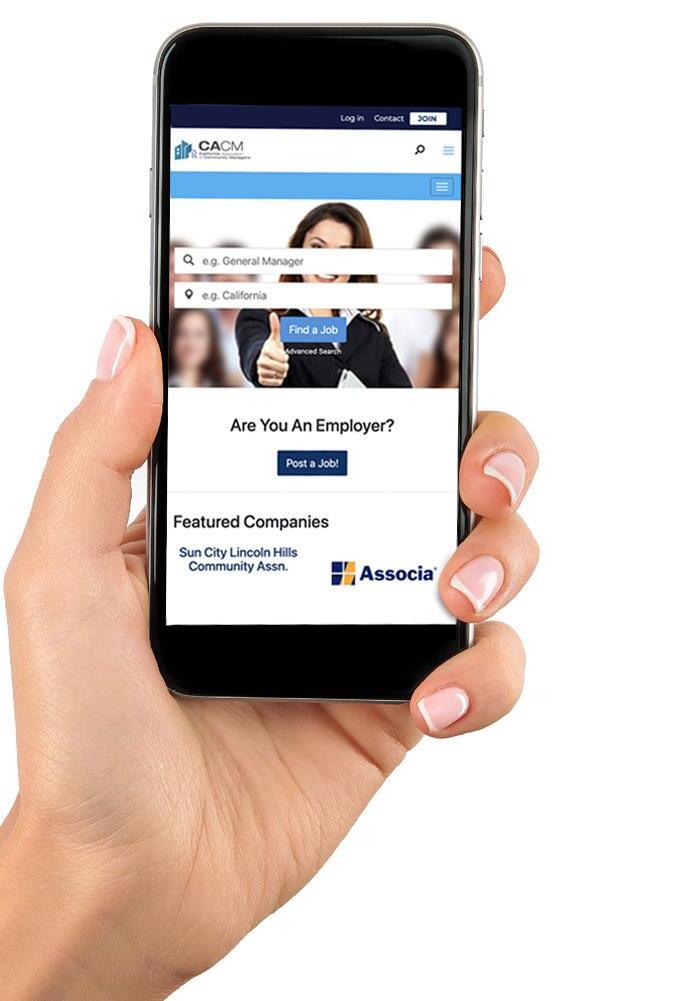
On top of posting your job opening, CACM delivers new job posts directly into email inboxes through its monthly Job Watch email and in its monthly MyCommunity member newsletter – both are sent to all of CACM’s members.
JOB WATCH MONTHLY EMAILS:
Average open rate: 33%;
Average click through rate: 7%
POSTING YOUR JOB IS AS EASY AS:
3 2
Please ensure you select your membership type before purchasing (we want to make sure you receive your discount!). You’ll also find there is a live chat feature on the page. Those individuals are ready to assist you with any questions you have in real time.
If, after this, you still need assistance, please feel free to reach out to help@ webscribble.com, and a representative from the company that supports CACM’s Career Center will further assist you in answering your questions and assisting you with your posting.
46 Vision Summer 2023 | cacm.org
CAREERS.CACM.ORG
serving your communities
New Industry Partner Members
CACM members further their success in the industry and benefit by partnering with colleagues to share new ideas and best practices. Join us in welcoming these new members from the first quarter of 2023 (January 1 – March 31.)
INDUSTRY PARTNER PLUS
Allied Landscape
Livermore | (925) 280-0160 www.contactallied.com/
Asphalt Surfacing, Inc. Milpitas | (408) 586-8824 www.asphaltsurface.com
Beach Cities Roofing San Juan Capistrano | (949) 329-9981 http://bcrpro.com
The Greenspan Co./Adjusters International South San Francisco | (925) 408-9880 www.greenspanai.com
MindMe Technology, Inc. Los Gatos | (408) 859-8128 www.mindmetechnology.com
Rainbow Restoration of Orange County Lake Forest | (949) 877-7211 rainbowrestores.com/orange-county
Salsbury Industries Carson | (800) 624-5269 http://mailboxes.com
INDUSTRY PARTNERS
AD Magellan Construction Management Vista | (877) 899-5990 www.admagellan.com
ADT San Diego | (602) 738-5525 www.adt.com/multifamily
Bemus Landscape, Inc. San Clemente | (888) 557-7910 www.bemus.com
Building Design and Analysis, Inc. San Diego | (619) 807-1843 balconyinspectionarchitects.com
California Painting Solutions San Diego | (619) 886-3402 www.capaintingsolutions.com
Capital CS Group Irvine | (949) 447-5405 www.capitalcsgroup.com
DryMaster Mission Viejo | (949) 492-1100 www.drymaster.com/
Elevate Water Management Anaheim | (657) 391-8515 www.eh2om.com/
Farmers Insurance - Kardar Agency
Chino Hills | (909) 982-3352
agents.farmers.com/ca/chino-hills/ nighat-kardar
Four Seasons Tree Care, Inc. San Marcos | (951) 888-4476 www.fourseasonstc.com
KTimeHR Irvine | (949) 331-1162 www.ktimehr.com
Lloyd Pest Control San Diego | (619) 843-6369 www.badbugs.com
McGuire Schubert Sohal LLP Stockton | (209) 425-4260 www.ms2.law
Metro Elevator San Francisco | (415) 656-7347
www.metro-elevator.com/norcal
National Protective Service Pinole | (628) 946-2764
nationalprotectiveservice.com/
North Coastal Maintenance Group San Marcos | (760) 309-4599
northcoastalmaintgrp.com
Old Village Landscaping, Inc. Fair Oaks | (916) 635-8000
www.oldvillagelandscaping.com
Pipe Restoration Solutions, Inc. Sarasota | (714) 604-8324
www.prspipe.com
Play Safe Inspections La Verne | (909) 570-1747
www.playsafeinspections.com
Proscape Landscape Signal Hill | (562) 988-2228
www.proscapelandscaping.com
Purpose Roofing & Waterproofing
Rancho Santa Margarita | (949) 409-5450
purposeroofs.com/
ServiceFirst Restoration, Inc. Laguna Hills | (855) 883-4778
www.callservicefirst.com/HOA
TEAC Structural Engineering Walnut Creek | (925) 275-0110
teacengineers.com
Trace Restoration Newport Beach | (949) 520-2124 tracerestore.com
cacm.org | Vision Summer 2023 47
Top Financial Items to Review
By Lorena Sterling, CAFM
Every month there is an opportunity to review your community’s financial health, which will assist you in forecasting economic events. The following health checklist will identify red flags and budget performance.
What to Look for on a Balance Sheet Statement
No matter the community or the balance sheet, they all look similar. The following are some standard components of the balance sheet that every manager should review monthly:

Operating Balance
An association’s operating account that obtains a minimum of 1.5 months of dues is determined to be healthy financially. A cushioned operating account allows for any unbudgeted costs the association may incur and does not qualify as reserve expenses.
Due To/From
Some communities will incur a balance, usually the operating account owing the reserve account. This may happen when insufficient funds are available to pay invoices or reserve allocation transfers. If you
see a new due to/from on your balance sheet, speak with your financial manager to determine why it occurred and create a plan with your board to pay this balance down. Before increasing dues or considering a special assessment, remember that associations have 12 months to repay the debt owed to themselves. Monthly transfers to pay down the balance may be a better option.
Reserve Funding
The reserve account is like the association’s savings account. It’s where money is set aside for major repairs and replacements. The funds contributed to reserves should be based on the amount recommended in the most recent reserve study and the components repair timeline. Keep in mind that as a baseline, lenders like to see reserves funded at 70% or better.
Investments
HOAs often invest reserve funds to keep them FDIC insured and to earn extra income to help offset future assessment increases. However, it is in the best interest to have at least one money market or reserve checking account to allow liquidity of sufficient funds to cover payments for upcoming reserve expenses. In addition, when investing funds, stagger maturity dates to maintain
adequate liquidity. Currently, Certificate of Deposit interest rates are at their highest, some serving up to 5.00%. So, although it is wise to keep enough funds liquid to pay incoming invoices, any excess reserve funds should be invested so they can earn interest income.
Profit or Loss
The Profit and Loss value indicates how well the community is doing. For example, for any financial period, you should be able to state, “Five months into the fiscal year, the community is operating with a profit of $8,760” or “Seven months into the fiscal year, the community is operating at a loss of $5,436.” This figure will continue to change every month, reflecting the expenses and budget the community is following.
Income/Expense Variances
A variance will display red flags if the community is overspending on budgeted categories. This figure is the difference between the expense and the budgeted amount for the month. For example, if the association paid $5,000 for tree trimming but only budgeted $3,000, the variance is a loss of ($2,000). The total variance for all categories will equal your profit/(loss).
48 Vision Summer 2023 | cacm.org
To further illustrate, many communities were over budget this year on utilities, especially Southern California Gas customers. During the budget season, if increases are not considered when allocating expenses, this will create a variance all year. Also, this may be a sign that a special assessment or mid-year assessment increase is on the horizon to get through the year’s second half.
Accounts Receivable Report
How much money does the membership owe the community? A breakdown of each member and the dues owed to the community is included in the accounts receivable reports. Keep an eye out for newly delinquent accounts and initiate the pay or lien process to collect dues for the community. The collection policy will provide details on this timeline. Following through on collection accounts is imperative, especially if the operating bank account needs more funds to cover expenses.
Final Thoughts
The health of your community’s finances is vital to its success. By monitoring your balance sheet statement, reserve account details, investments, monthly profit or loss, and accounts receivable report, you will be able to identify red flags and better determine budget performance. With a comprehensive understanding of your community’s financials, your management commitments will be more successful as you forecast economic events.

Additionally, with prudent management and sound financial practice, you can ensure your clients are equipped to handle current and future financial obligations. As Benjamin Franklin once said, “the little expense of time and thought in money matters will be repaid a hundredfold.”
So, take the time to review your financial health, and you will set yourself and your communities up for a successful future.

cacm.org | Vision Summer 2023 49
Lorena Sterling, CAFM, is the Controller at Community Association Financial Services (CAFS).
“The little expense of time and thought in money matters will be repaid a hundredfold.”
Benjamin Franklin
NORTH BAY LUNCH SEPT. 13 11:00 AM – 1:30 PM
SACRAMENTO BREAKFAST
SEPT. 14
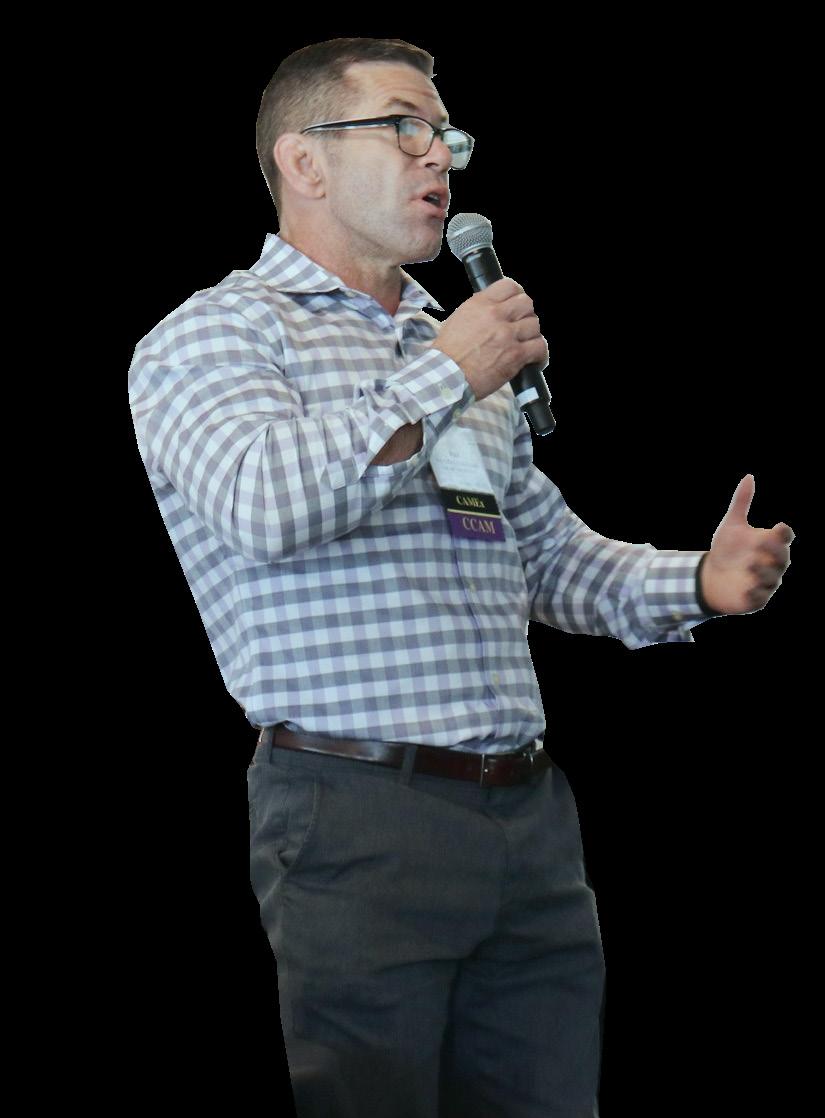
8:30 AM – 11:00 AM REGISTER






ORANGE COUNTY LUNCH
SEPT. 27
11:00 AM – 1:30 PM

COACHELLA VALLEY BREAKFAST
OCT. 12
8:30 AM – 11:00 AM
50 Vision Summer 2023 | cacm.org
CACM.org
us for breakfast or lunch and ask your most pressing questions of our industry experts. Attending industry partners will be on hand to discuss key issues and solutions. Plus, learn from and network with peers who are facing similar challenges. You will walk away with a list of new strategies and ideas to implement in your communities.
REGISTER NOW:
Note: MCAMs, CCAMs, & CAFMs earn 2 CEUs Join
REGISTER
SAN DIEGO LUNCH SEPT. 7 11:00 AM – 1:30 PM
REGISTER
EAST BAY LUNCH SEPT. 11 11:00 AM – 1:30 PM
REGISTER
REGISTER
REGISTER
SAN DIEGO
Manager Support Sponsors
Accurate Termite & Pest Control
Berding | Weil LLP
California Painting Solutions
Micro Session Table Sponsors
Alliance Association Bank
BrightView Landscape Services, Inc.
SACRAMENTO
Manager Support Sponsors
Adams | Stirling PLC
Alliance Association Bank
Angius & Terry LLP
Cagwin & Dorward Landscape Contractors
Socher Insurance Agency
Micro Session Table Sponsors
Citadel Roofing & Solar
EmpireWorks Reconstruction
Westlake Royal Roofing Solutions
ORANGE COUNTY
Manager Support Sponsors
Accurate Termite & Pest Control
Adams | Stirling PLC
Reconstruction Experts
Micro Session Table Sponsors
CM Squared, Inc.
EmpireWorks Reconstruction
MindMe Technology, Inc.




MPS Financial LLC
Payne Pest Management
PCW Contracting Services
Pro Star Mechanical Services
ProTec Building Services
Riley Pasek Canty LLP
Tree Pros, Inc.
COACHELLA VALLEY
Manager Support Sponsor
Fiore Racobs & Power, A PLC
Micro Session Table Sponsors
Alliance Association Bank
MPS Financial, LLC
cacm.org | Vision Summer 2023 51
THANK YOU SPONSORS
Wellness? What’s Corporate
And why does it matter?
is
Wellness is
By Michelle Hawkins
Trying to define corporate wellness is a bit like trying to describe a gift before you’ve had the chance to unwrap it. It’s not what it appears to be by first glance, by feel, or even when shaking it about. It isn’t until you peel back the wrapping paper, cut through the scotch tape and pry the lid off the box that you discover something truly just for you, and maybe even, at just the perfect time. You discover an offering of an opportunity to embrace your best self.
It is amazing in how many ways it can manifest during your journey. And maybe, just maybe, if you peer a little deeper into that box you may discover what I found to be the even greater gift - learning that your organization (in some cases we call them our second families), that we spend a third of our lives with, day-in and day-out, really does care about our well-being as a fellow human. Along my personal journey this has led me to understand that a truly successful corporate wellness program is an unexpected offering of humanitarianism.
When most people think about corporate wellness, they picture a gym membership, maybe even a gym and showers in the same building allowing you to break away for a quick workout session without much time lost. Perhaps they picture endless snacks and treats available to the team, speed-walking around the campus, or those potentially uncomfortable midafternoon encounters with your cubicle-mates decked out in the latest yoga compression garb, and maybe even some ergonomics and nutritional trainings to support a healthier lifestyle.
52 Vision Summer 2023 | cacm.org
Health
a state of body.
a state of being.
J. Stanford
Well, those people are absolutely right. A robust wellness program can be all of these things, and more. However simply providing some or all of these resources and opportunities will not guarantee a successful program in any regard.
Measuring success in any corporate program (my goodness, isn’t measuring what corporations do – investments, returns, rates etc., etc.), least not a wellness program, is an oftendiscussed topic. But not necessarily for the reasons one may think. Honestly, it’s actually less to do with bottom lines and rather largely about…well, wellness.
So, what does a successful wellness program look like?
Let’s begin by taking a look at what wellness is. If we examine, and genuinely agree with, the quote at the start of this article that “Wellness is a state of being” then we can then surmise that corporate wellness is a state of corporate well-being. Achieving a state of corporate well-being relies heavily on the notion that the company, its leadership and teammates up, down, and across offices and divisions must imbue its culture and champion the value - that the well-being of employees (the family) – is the cornerstone of its existence.

So where does success lie? A sincere program that is rooted in values that unmistakenly promote the well-being of people can create tremendous outcomes for everyone involved. In addition to the bounty of personal benefits like enhanced physical fitness (health and longevity) and a more focused and relaxed mind (mindfulness), the truest expressions of success can be found in the connectedness that is harnessed among the entire team through the process of participation. Connectedness creates an increased sense of personal value that can stimulate a deeper bond with and within the organization that in turn promotes a greater sense of employee ownership.
Engage me for a moment in a light thought experiment. Imagine, a valued and bonded team that is passionate about the health and happiness of their own personal lives as well as about the mission their company is committed to. Now, couple this with a new or reinvigorated authenticity that people often take on when reaching for self-betterment. And, we all can agree there is truth in the view that our personal authenticity goes a long way in creating a safer space in which others have permission to show up and be their authentic selves.
Taking this a step further, we can observe that when our interactions with others are sincere and honest (whether it be with a friend, family member, favorite teacher, doctor) the
relationships that arise from them will form stronger bonds. Assuming this is true, then it also holds true for relationships between employees, across departments, relationships with clients, vendors and all new and longstanding trusted partners that we serve or rely upon. Therefore, what our little thought game reveals to us is that a wellness program is the way through which we can embody and equally impart our company’s culture. A positive measure of success I believe we all would agree.
Often what arises as a simple byproduct of the enriched wellness and experiences of employees –attained through participation in your wellness program’s offerings— is the improved overall health and happiness of the organization. But it is important to be mindful as you develop a program; it must originate from a place of genuineness and compassion. Overall, it is less about the specific types of wellness initiatives offered, and far more about the fact that the company cares enough to offer them in the first place. Whether through a state-of-the-art gym, or, by simply extending an invitation to go for a walk, the offering in and of itself should be a natural outgrowth and reflection of the company’s culture.
So in the end – which in this case really marks just the beginning – the success of a corporate wellness program rests in the hands and heart of those for whom it is intended; each and every employee serving any and all roles within the organization.
The concept of corporate wellbeing can only materialize when the employees genuinely understand the depth to which the company truly values and cares about them as human beings. When led from the top down, consistent with the values rooted in the culture of the company, wellness programming harnessed to improve the lives of people, can be channeled to illuminate all that is promising and exceptional about an organization. So, underneath that shiny wrapping paper and big bow must ultimately be a gift of the heart. For without that, how could one ever know where to even begin its “measure” of success.
cacm.org | Vision Summer 2023 53
Michelle S. Hawkins is Division Operations Manager & Corporate Wellness Chair for The Management Trust - Northern CA, ACMC.
WE LOVE OUR MEMBERS!


CACM is coming to you in your local market!
Our local committees are hard at work planning some fun networking events this summer.

Here are a few snapshots from local happy hours and networking events so far this year! To sign up to attend or sponsor, visit https://cacm.org/events/local-events/.

We’ll see you soon in your backyard!

54 Vision Summer 2023 | cacm.org
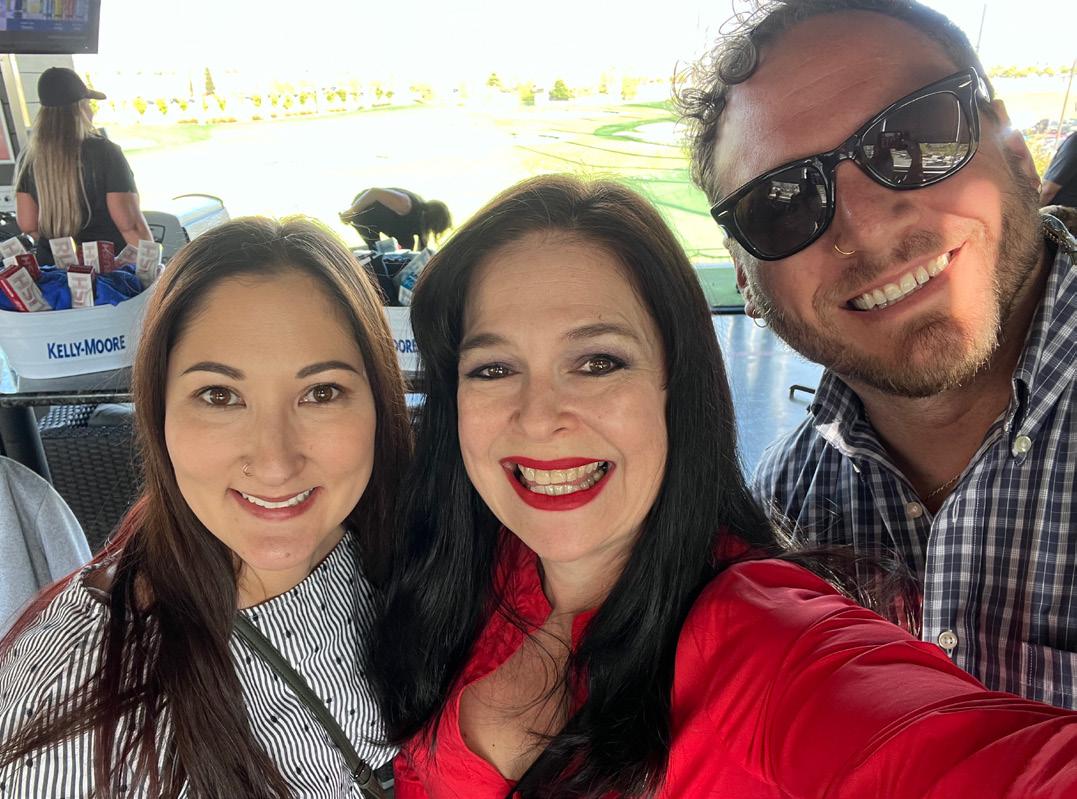
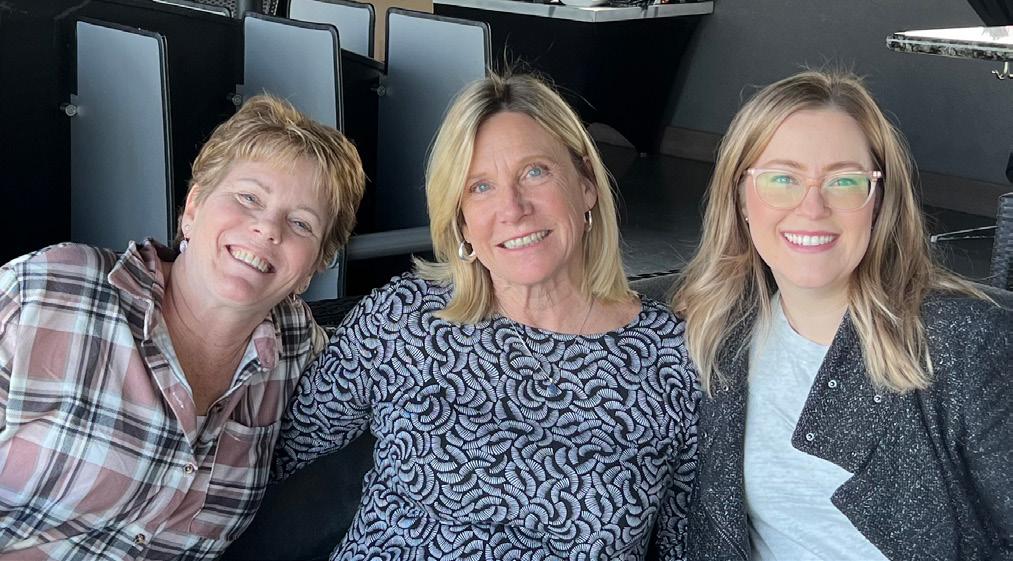






cacm.org | Vision Summer 2023 55


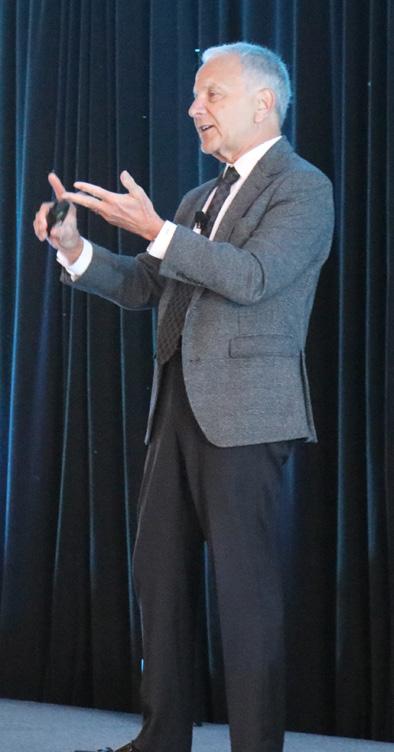





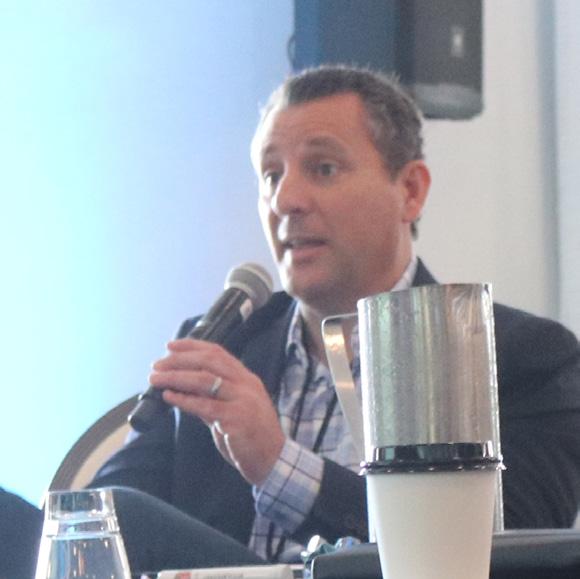

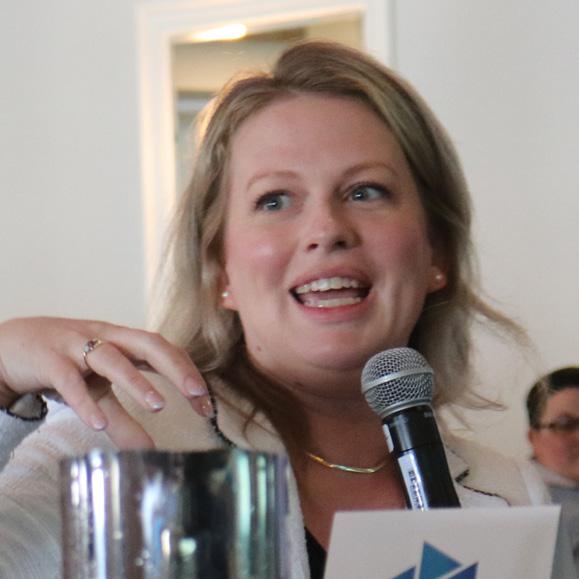
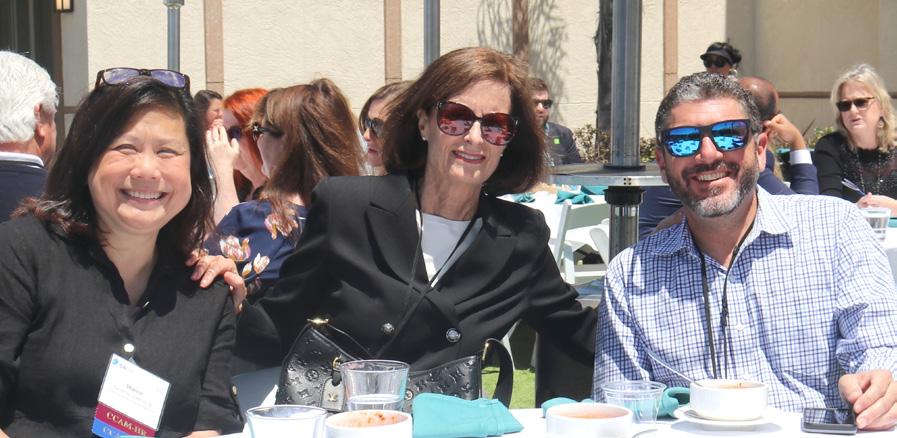



cacm.org | Vision Summer 2023 57
Course Calendar
LARGE SCALE COMMUNITY MANAGEMENT
Zoom SPC410
Session 1 of 6
July 11
1:00 PM - 3:30 PM
Session 2 of 6
July 12
1:00 PM - 3:30 PM
Session 3 of 6
July 18
1:00 PM - 3:30 PM
Session 4 of 6
July 19
1:00 PM - 3:30 PM
Session 5 of 6
July 25
1:00 PM - 3:30 PM
Session 6 of 6
July 26
1:00 PM – 3:30 PM
ADVANCED ETHICS: LEADERSHIP & DECISION MAKING
Zoom LDR500
Session 1 of 2
July 13 9:00 - 11:00 AM
Session 2 of 2
July 13 1:00 PM - 3:00 PM
FOUNDATIONAL ETHICS FOR COMMUNITY MANAGERS
Session 2 of 2 July 20
CONFLICT RESOLUTION FOR COMMUNITY MANAGERS
CALIFORNIA LAW SERIES Zoom
Session 1 of 8 CMM121
August 1 9:00 AM - 11:00 AM
Session 2 of 8 CMM121
August 2
AM - 11:00 AM
Session 3 of 8 CMM122
August 8
AM – 11:00 AM
Session 4 of 8 CMM122
August 9
AM - 11:00 AM
BUDGETING
Session 5 of 8 CMM123
August 15 9:00 AM - 11:00 AM
Session 6 of 8 CMM123
August 16 9:00 AM - 11:00 AM
Session 7 of 8 CMM124
August 22
AM - 11:00 AM Session 8 of 8 CMM124 August 23
EFFECTIVE MEETINGS & ELECTION TOOLS
Session 1 of 2
August 29 9:00 AM - 11:00 AM
STRATEGIC FINANCIAL PLANNING
Session 1 of 2
August 29
PM - 3:00 PM
RESERVES –WHAT, WHY, HOW
CALIFORNIA LAW
FOUNDATIONAL ETHICS FOR COMMUNITY MANAGERS
1 of 2
BASICS OF ASSOCIATION MANAGEMENT (BAM)
Zoom
Session 1 of 8 CMM101
July 31
1:00 PM - 3:00 PM
Session 2 of 8 CMM101
August 1
1:00 PM - 3:00 PM
Session 3 of 8 CMM101
August 7
1:00 PM - 3:00 PM
Session 4 of 8 CMM101
August 8 1:00 PM - 3:00 PM
Session 5 of 8 CMM102
August 14
1:00 PM - 3:00 PM
Session 6 of 8 CMM102
August 15
1:00 PM - 3:00 PM
Session 7 of 8 CMM102
August 21
1:00 PM - 3:00 PM
Session 8 of 8 CMM102
August 22
1:00 PM - 3:00 PM
FUNDAMENTALS OF EFFECTIVE GOVERNANCE
Session 2 of 2
ADVANCED ETHICS: LEADERSHIP & DECISION MAKING
Session 4 of 8 CMM122
58 Vision Summer 2023 | cacm.org
upcoming courses
9:00
9:00
9:00
9:00
9:00
11:00
August
1:00 PM - 3:00 PM
AM -
AM Session 1 of 2
2
Zoom FIN300 Session
August 9 1:00 PM - 3:00 PM
1 of 2
Zoom FIN200
August
9:00
12:00
Session
August
9:00
One session only
3
AM -
PM
10
AM - 11:00 AM
Zoom CMM130 Session 2 of 2 August 10 1:00 PM - 3:00 PM Session 1 of 2 August 24 9:00 AM - 11:00 AM ETHICS MASTERY Zoom LDR550 Session 2 of 2 August 24 1:00 PM - 3:00 PM
PRINCIPLES Zoom INS200 One session
August 31 9:00 AM - 12:00 PM Session
CMM121 September 5 1:00 PM
3:00 PM Session
CMM121 September 6 1:00 PM - 3:00 PM Session 3
CMM122 September
1:00 PM
INSURANCE
only
1 of 8
-
2 of 8
of
7
- 3:00 PM
1:00
September 12
PM - 3:00 PM
Zoom
1:00
3:00
1:00
3:00
1:00
3:00
September
1:00
3:00
Session
9:00
SERIES
Session 5 of 8 CMM123 September 13
PM -
PM Session 6 of 8 CMM123 September 14
PM -
PM Session 7 of 8 CMM124 September 19
PM -
PM Session 8 of 8 CMM124
20
PM -
PM
1 of 2 July 20
AM - 11:00 AM
Zoom CMM130
1:00
PM - 3:00 PM Session 1 of 2
9:00
July 25
AM - 11:00 AM
Zoom CMM220
9:00
1:00
Session 2 of 2 July 26
AM - 11:00 AM Session 1 of 2 August 16
PM - 3:00 PM
Zoom BDA300
1:00
9:00
August 23
PM - 3:00 PM Session 1 of 2 August 17
AM - 11:00 AM
Zoom LDR500
1:00
Session 2 of 2 August 17
PM - 3:00 PM
Zoom BDA220
9:00
Session 2 of 2 August 30
AM - 11:00 AM
1:00
Zoom FIN320
1:00
Session 2 of 2 August 30
PM - 3:00 PM
All educational courses through the end of the year are held on Zoom. Please contact a member of the Education Department for further details and schedule.
BASICS OF ASSOCIATION MANAGEMENT (BAM)
Zoom
Session 1 of 8 CMM101
September 6
9:00 AM - 11:00 AM
Session 2 of 8 CMM101
September 7
9:00 AM - 11:00 AM
Session 3 of 8 CMM101
September 12
9:00 AM - 11:00 AM
Session 4 of 8 CMM101
Session 5 of 8 CMM102
September 19 9:00 AM - 11:00 AM
Session 6 of 8 CMM102
September 20 9:00 AM - 11:00 AM
Session 7 of 8 CMM102
September 26 9:00 AM - 11:00 AM
Session 8 of 8 CMM102
PREREQUISITE INS200 OR INS300
9:00
Session 2 of 2 October 11 9:00 AM - 12:00 PM
ADVANCED INSURANCE PRINCIPLES
Zoom INS300 One session only
October 5
AM - 12:00 PM
ASSESSMENT COLLECTIONS
Zoom FIN210
Session 2 of 2 October 26
September 13 9:00 AM - 11:00 AM
Session 1 of 2
October 18
9:00 AM - 11:00 AM
CALIFORNIA LAW SERIES
Zoom
Session 1 of 8 CMM121
Session 1 of 3
November 28
1:00 PM - 3:00 PM
Session 2 of 3
AM - 11:00 AM
October 24
9:00 AM - 11:00 AM
Session 2 of 8 CMM121
October 25 9:00 AM - 11:00 AM
Session 2 of 2
October 19 9:00 AM - 11:00 AM
28
AM - 11:00 AM
September 27 9:00 AM - 11:00 AM Session 1 of 3
October 3
AM - 12:00 PM Session 2 of 3
October 10
AM - 12:00 PM
CONFLICT RESOLUTION Zoom
Session 1 of 2
October 3
PM - 3:00 PM
AM - 12:00 PM
Session 3 of 8 CMM122
November 1 9:00 AM - 11:00 AM
Session 4 of 8 CMM122
November 2 9:00 AM - 11:00 AM
Session 5 of 8 CMM123
November 8 9:00 AM - 11:00 AM
Session 6 of 8 CMM123
November 9
9:00 AM - 11:00 AM
Session 7 of 8 CMM124
November 15
9:00 AM - 11:00 AM
Session 8 of 8 CMM124
November 16 9:00 AM - 11:00 AM
BASICS OF ASSOCIATION MANAGEMENT (BAM) Zoom
Session 1 of 8 CMM101
October 24
1:00 PM - 3:00 PM
Session 2 of 8 CMM101
October 25
1:00 PM - 3:00 PM
Session 5 of 8 CMM102
November 8
1:00 PM - 3:00 PM
Session 6 of 8 CMM102
November 9
1:00 PM - 3:00 PM
Session 2 of 2
Session 3 of 8 CMM101
November 1
1:00 PM - 3:00 PM
Session 4 of 8 CMM101
November 2
1:00 PM - 3:00 PM
Session 7 of 8 CMM102
November 15 1:00 PM - 3:00 PM
Session 8 of 8 CMM102
November 16 1:00 PM - 3:00 PM
December 5
2 of 2
PM - 3:00 PM Session 1 of 2 November 30
30
ADVANCED ETHICS: LEADERSHIP & DECISION MAKING
Session 2 of 2
AM - 11:00 AM
ENHANCE YOUR PROFESSIONAL PRESENCE
12
AM - 11:00 AM
MASTERY Zoom
AM - 11:00 AM
PM - 3:00 PM
cacm.org | Vision Summer 2023 59
9:00
9:00
LDR400
9:00
HUMAN RESOURCE MANAGEMENT Zoom
Session 3 of 3 October 17
1:00
1:00
CMM220
October 10
PM - 3:00 PM
9:00
EXPLAINING FINANCIAL
Zoom FIN220 Session
December 12 1:00
3:00
September
9:00
Zoom CMM130 Session
September
1:00
Session
September
9:00
Zoom LDR500 Session 2
2 September 28 1:00 PM - 3:00 PM
9:00
Zoom CMM130
1:00
9:00
Zoom CMM130 Session
November
1:00
December
9:00
Zoom LDR500
December
1:00
December
9:00
Zoom CMM200
December
1:00 PM - 3:00 PM 9:00
STATEMENTS 9:00
3 of 3 ETHICS
PMLDR550
PM Session 1 of 2 December
21 1:00
FOUNDATIONAL ETHICS FOR COMMUNITY MANAGERS
2 of 2
21
PM - 3:00 PM
1 of 2
ADVANCED ETHICS: LEADERSHIP & DECISION MAKING
of
Session 1 of 2 October 26
AM - 11:00 AM
FOUNDATIONAL ETHICS FOR COMMUNITY MANAGERS
AM - 11:00 AM
FOUNDATIONAL ETHICS FOR COMMUNITY MANAGERS
PM - 3:00 PM Session 1 of 2
7
7
PM - 3:00 PM Session 1 of 2
Session 2 of 2
13
AM - 11:00 AM
Session 1 of 2 December 14
Session 2 of 2
14
Session 1 of 2 October 4
AM - 12:00 PM
RISK MANAGEMENT Zoom
INS400
Thank you to our sponsors for the first quarter of 2023 (January 1 – March 31) for their generous contributions. The next time you encounter a CACM Sponsor, please join us in acknowledging the work and generosity of these supportive members.

Accurate Outcome, LLC
Accurate Termite & Pest Control
AD Magellan Construction Management
ADCO Roofing & Waterproofing
Advanced Restoration Alliance Environmental Group, LLC
ALP Construction & Painting Inc.
Alta Roofing & Waterproofing
A-One Construction & Roofing Association Maintenance Services, Inc. (AMC)
AvidXchange, Inc.
AWT Construction Group, Inc.
Axos Bank
Beach Cities Roofing
Ben’s Roofing, Inc.
BluSky Restoration Contractors
Brightview Landscape Services, Inc.
Brightview Tree Care Services
BTC Bob Tedrick Construction, Inc.
CalPro Construction & Painting
CAM Construction & Painting
CID Insurance Programs
CM Squared, Inc.
Collins Management Foundation
Columbia Bank
Community Legal Advistors, Inc.
Dedicated Transportation Services (DTS)
Diamond Roofing
Eichman Insurance Agency, Inc.
Farmers Insurance
Elevate Construction LLC
EmpireWorks Reconstruction Enterprise Bank & Trust
Gordian Staffing
Greenfield Metal Systems
Heritage Bank of Commerce
High End Development, Inc.
HireSmart Virtual Employees
Hotwire Communications
Hub International Insurance Services

Hughes Gill Cochrane Tinetti, PC
IQV Construction & Roofing
Kasdan Turner Thompson Booth LLP
Kelly-Moore Paint Co., Inc.
Kriger Law Firm
Leading Edge Construction Services, Inc.
Liberty HOA Election Services, LLC
LiftMaster
Lombard Consulting Services, Inc.
MB Jessee Painting, Inc.
McCormack Roofing Construction & Energy Solutions
McKowski’s Maintenance Systems, Inc.
Medallion Landscape
MindMe Technology, Inc.
Mission Landscape Companies, Inc.
National Protective Service
Nordberg l DeNichilo LLP
North Coastal Maintenance Group
OCBS
Play Safe Inspections
Precision Concrete Cutting
Premier Commercial Painting
Professional Community Management
- An Associa Company
R & S Overhead Garage Door, Inc.
R.E. Broocker Co., Inc.
Recon 360, LLC
Reliant Construction Management, LLC
Restoration Management Company
River City Restoration, Inc.
Roof Solutions, Inc.
Ruff Ruff Poop Bags
S & K Marketing Group, LLC
Saarman Construction, Ltd.
ServPro Team Brogdon
Signature Services
Southern California Edison Statcomm - PSI Statcomm Inc.
Superior Roofing
SwedelsonGottlieb
TARC Construction, Inc.
The Miller Law Firm
The Naumann Law Firm, PC
Tinnelly Law Group
TownSq
Unlimited Property Services, Inc.
Vantaca
Velocity Construction Services, Inc.
VendorSmart
Westcoat Specialty Coating Systems
Whitestone Industries
Whit’s Painting
Yardi Breeze
60 Vision Summer 2023 | cacm.org
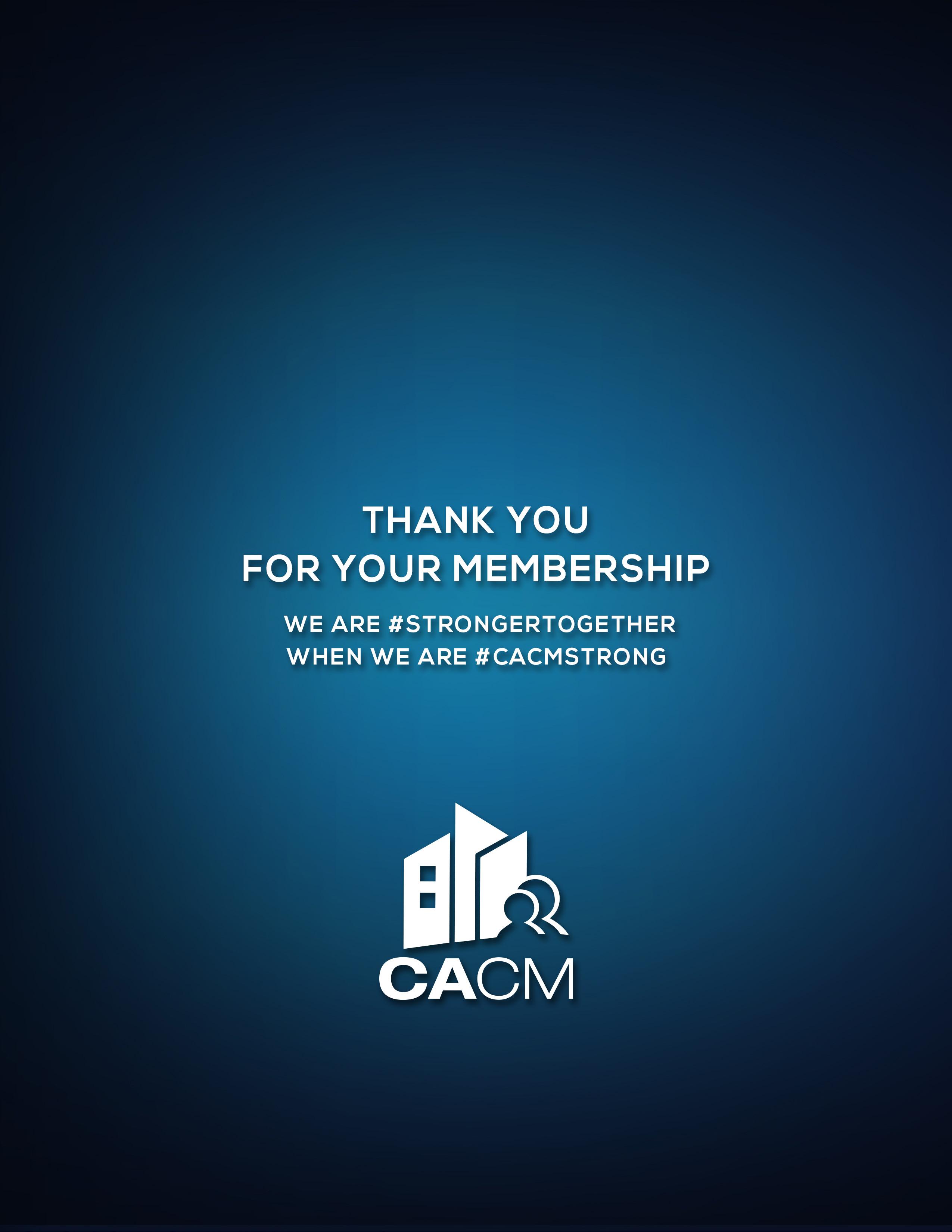











 By Scott Swinton
By Scott Swinton




























































 — ProTec Building Services
— ProTec Building Services




 — Berding Weil
— Berding Weil




 — Daisy Ortiz, Sales and Marketing Manager, IQV
— Daisy Ortiz, Sales and Marketing Manager, IQV







 By Jennifer Wada, Esq.
By Jennifer Wada, Esq.


























 By Andrew Hay, CAMEx, CCAM-ND.PM
By Andrew Hay, CAMEx, CCAM-ND.PM








































































